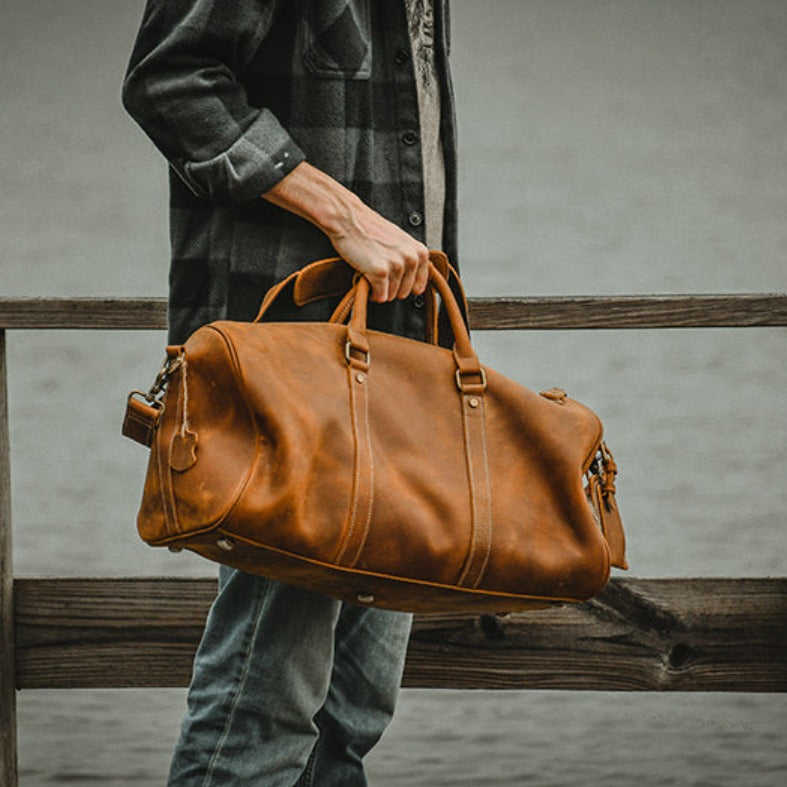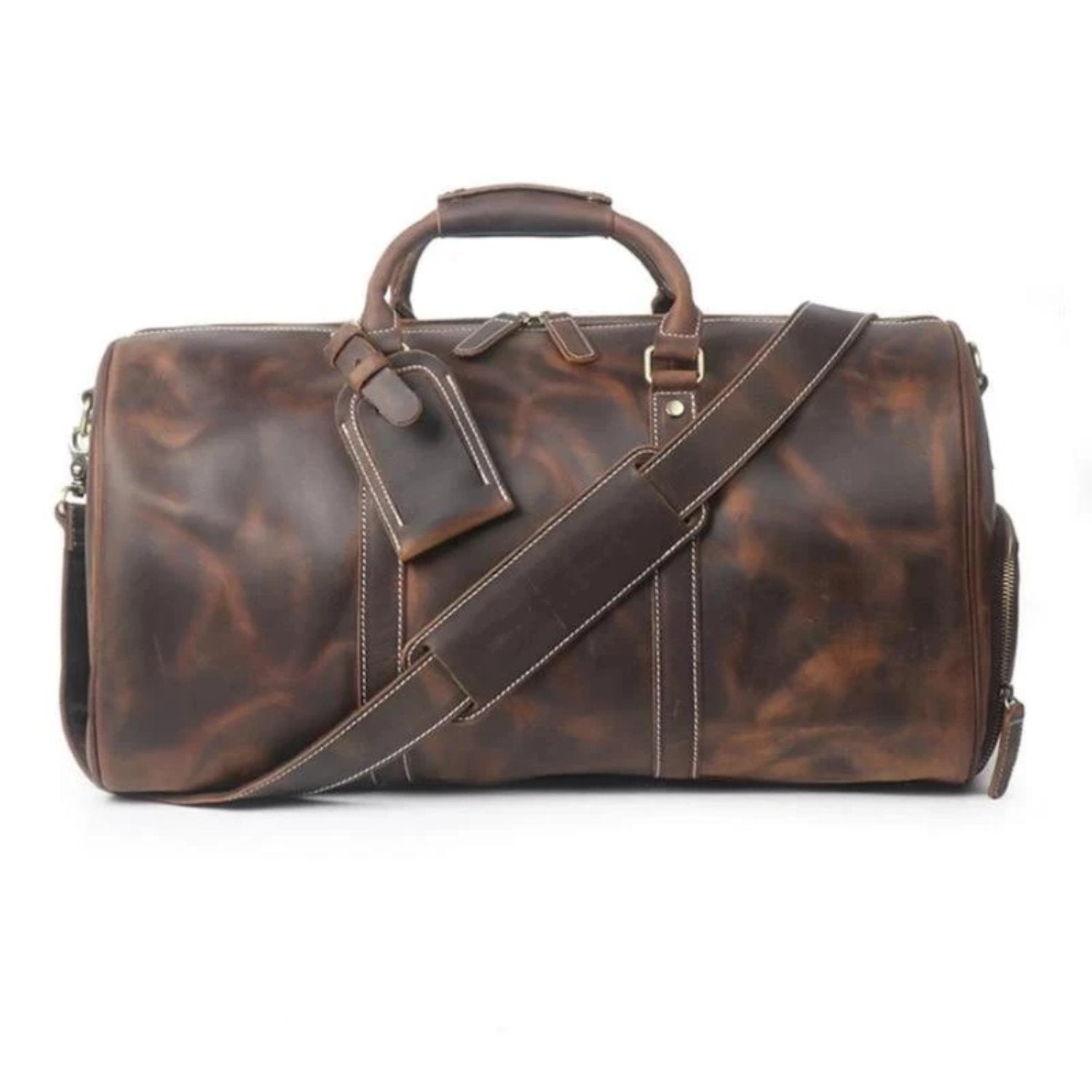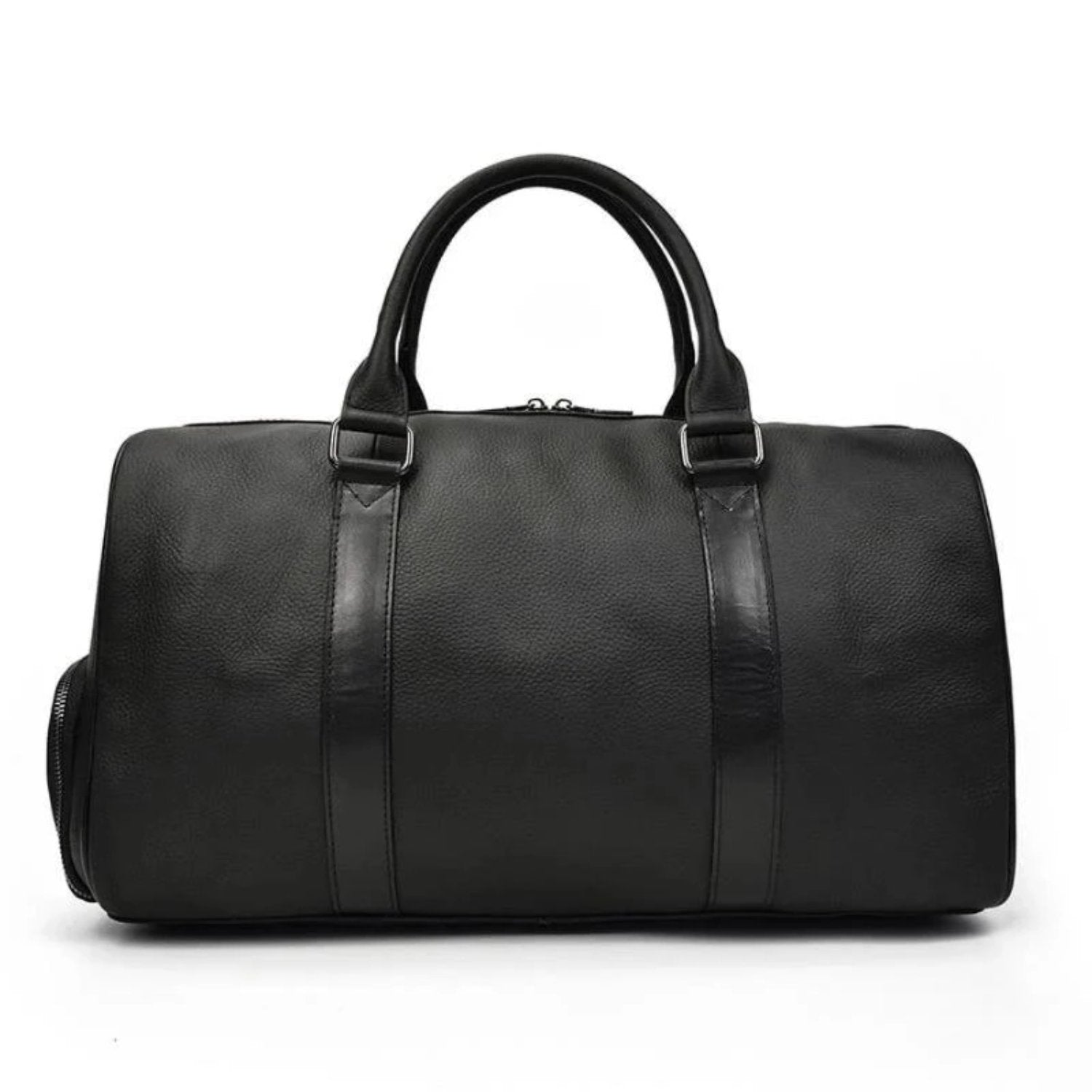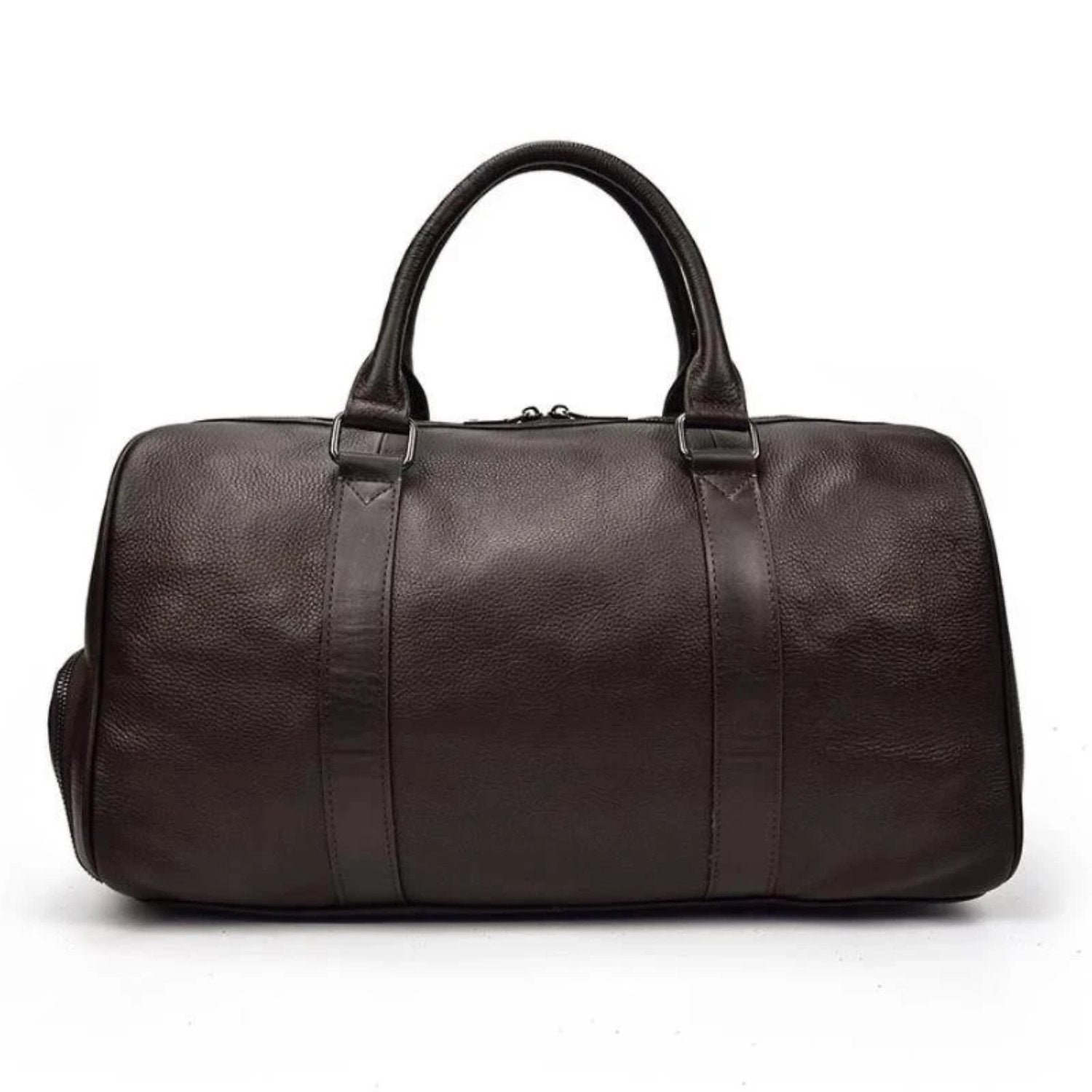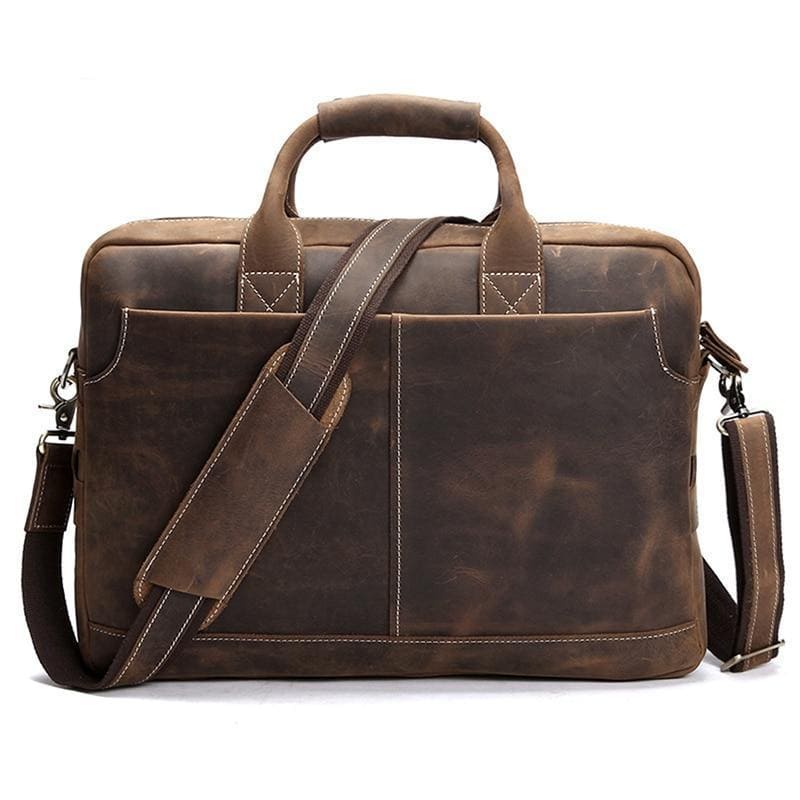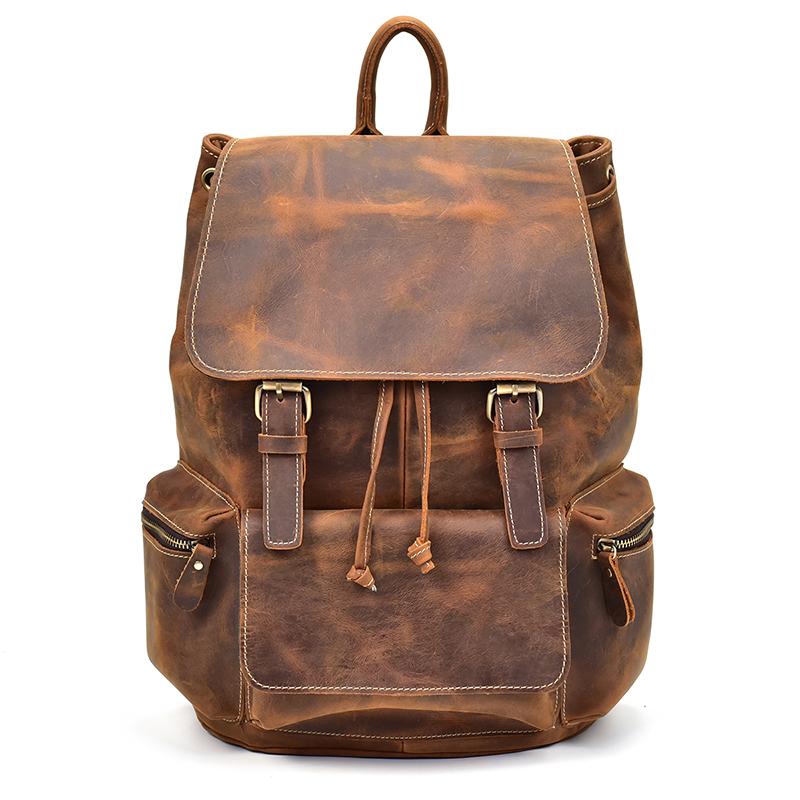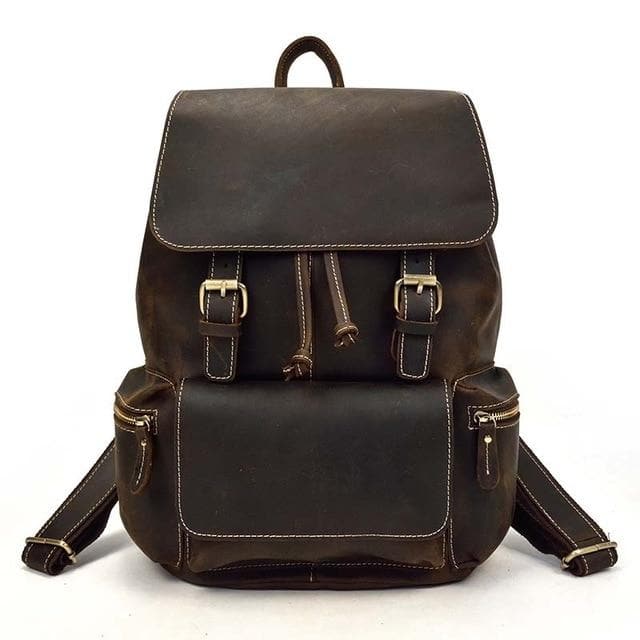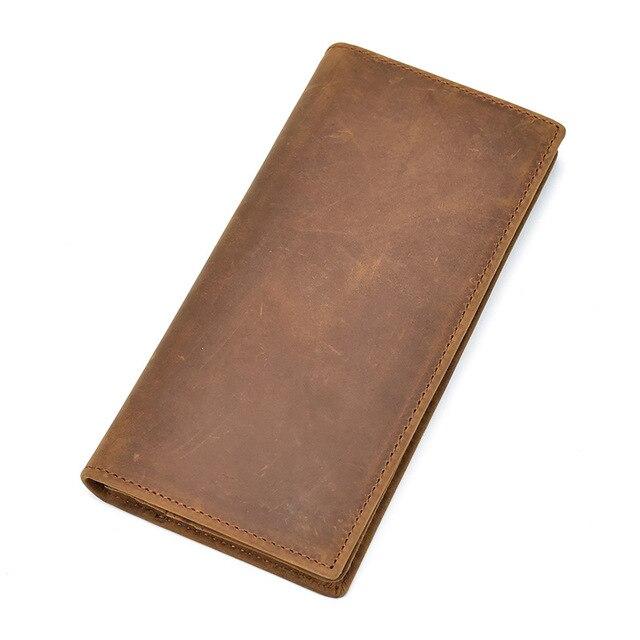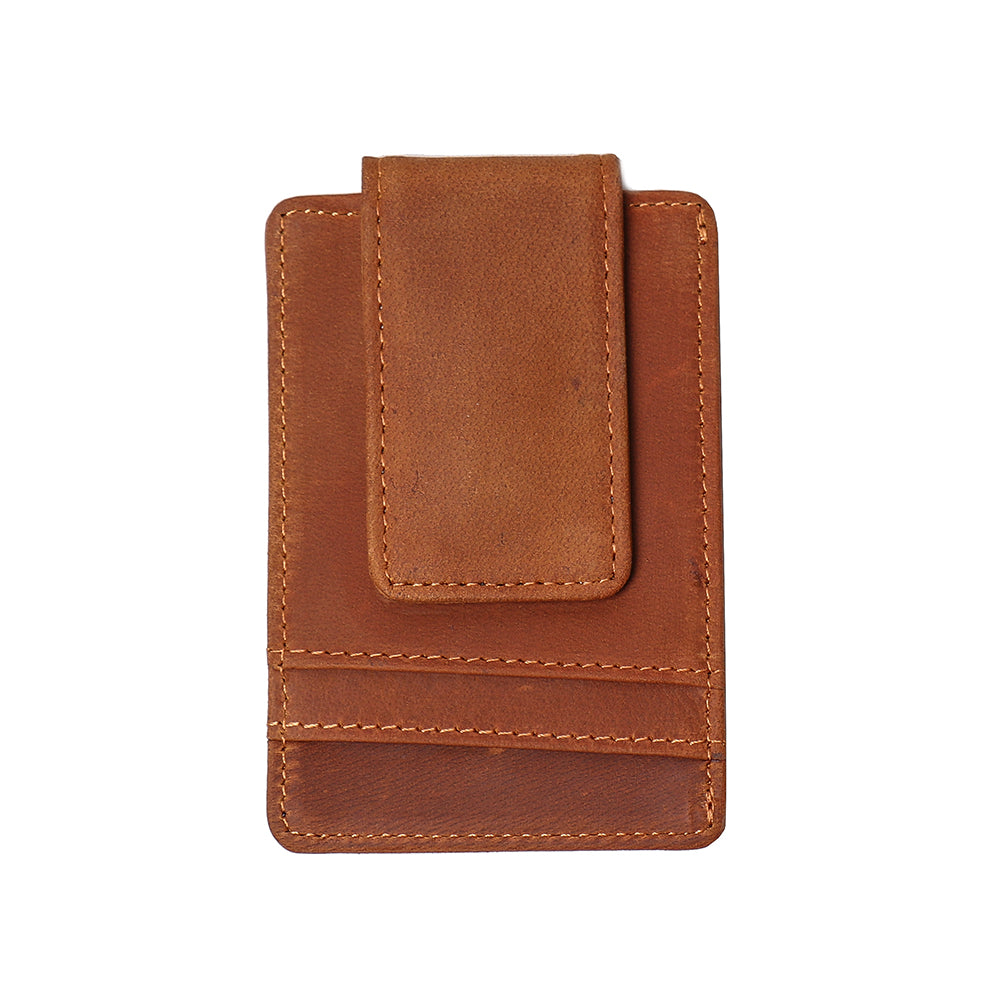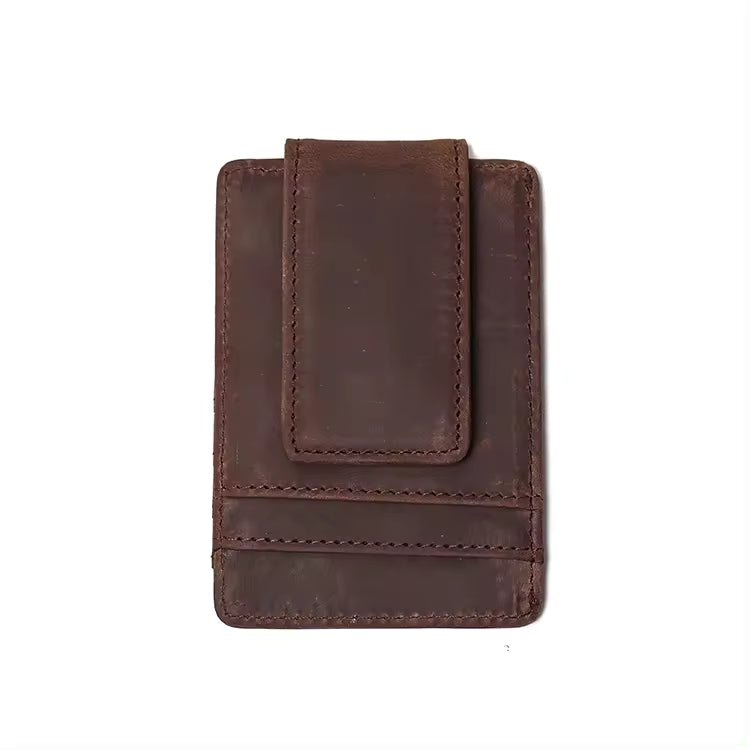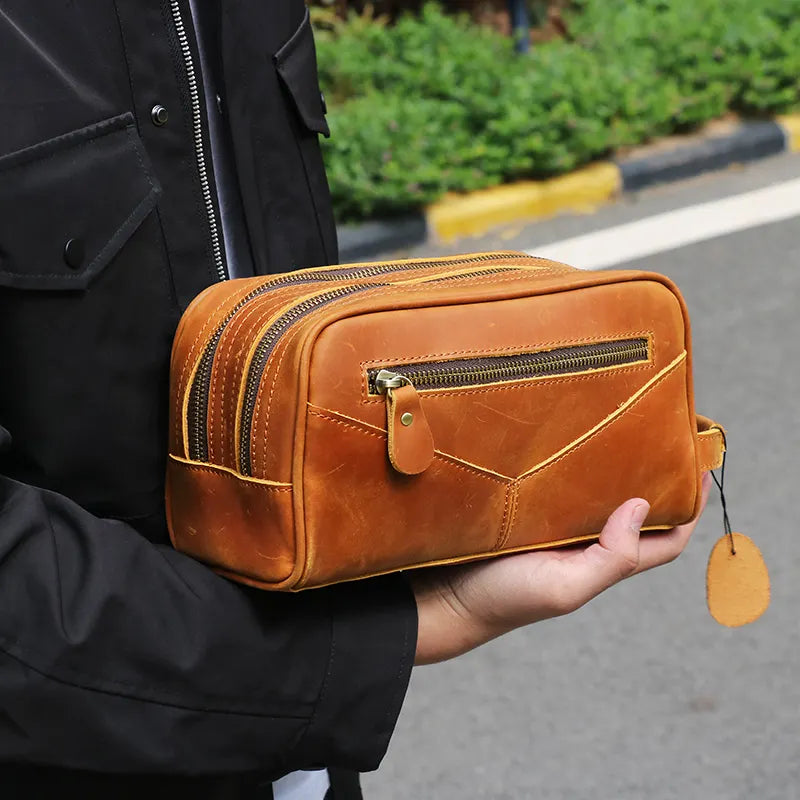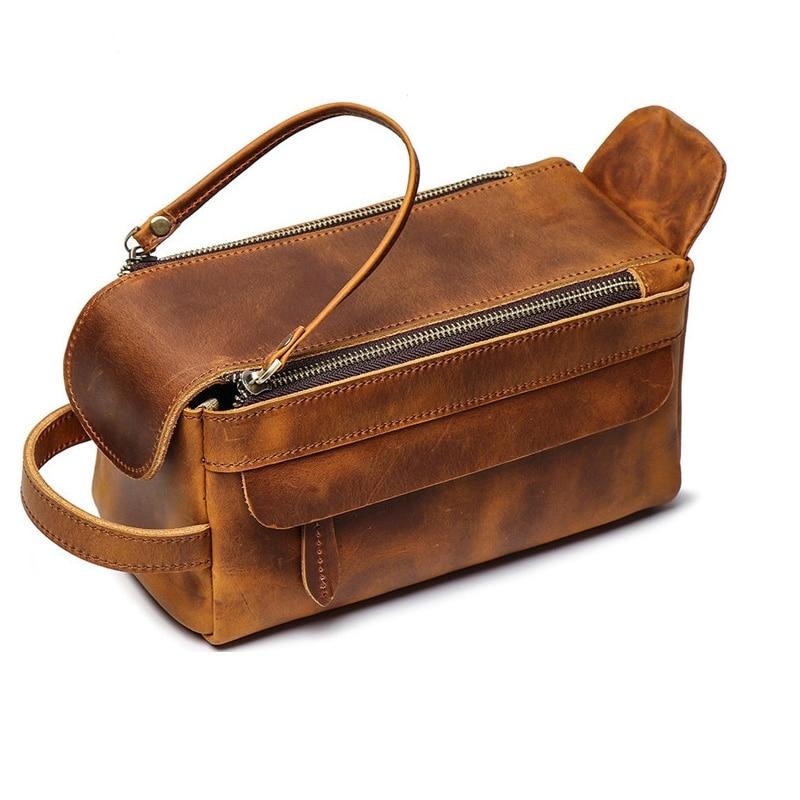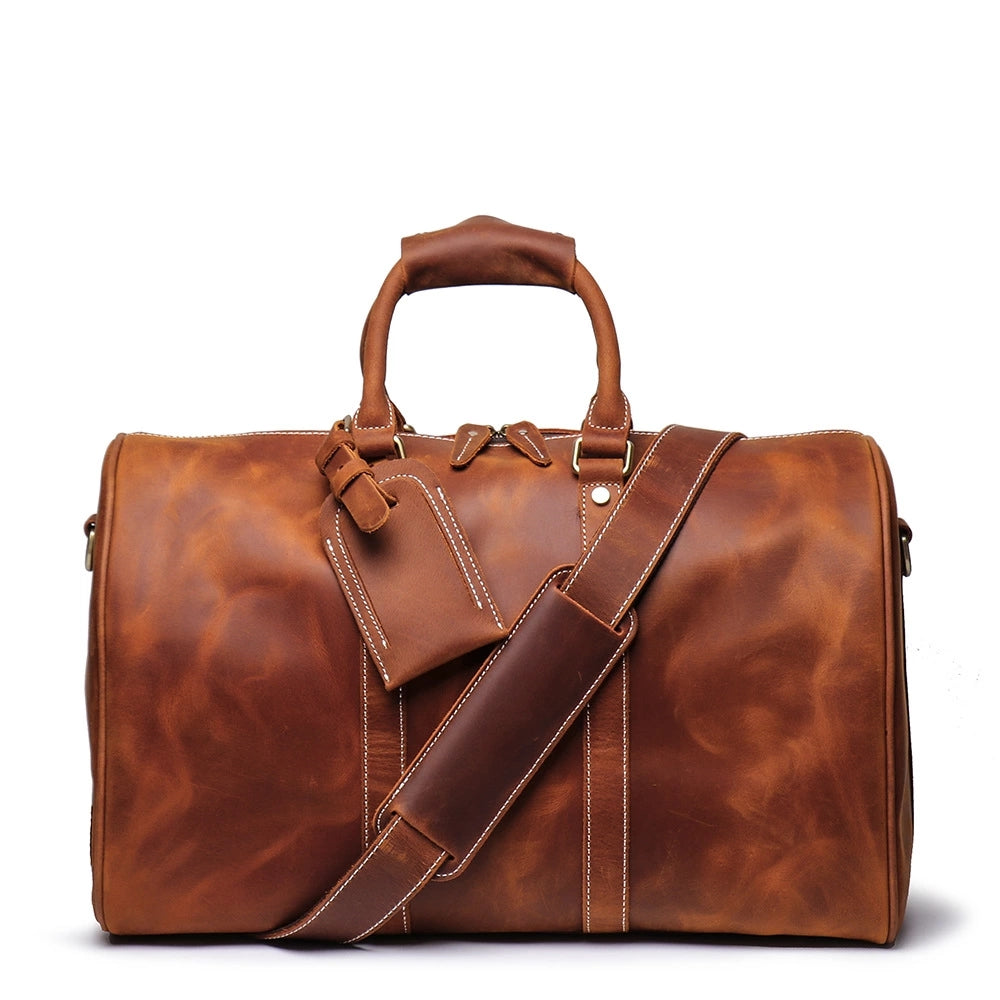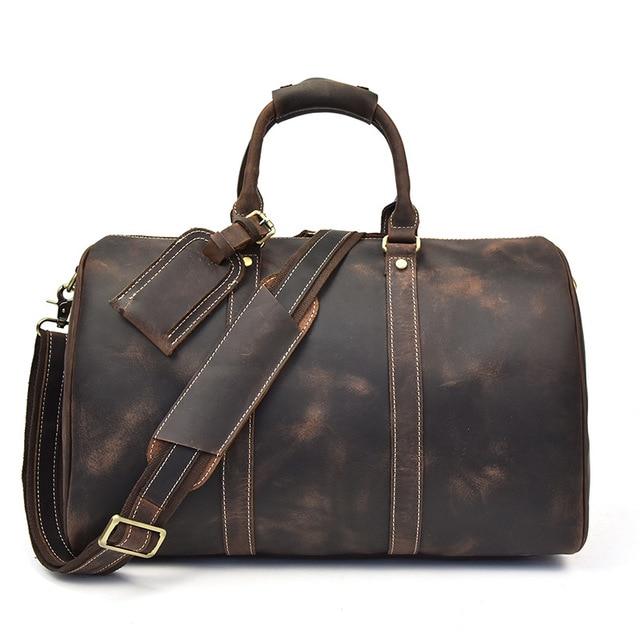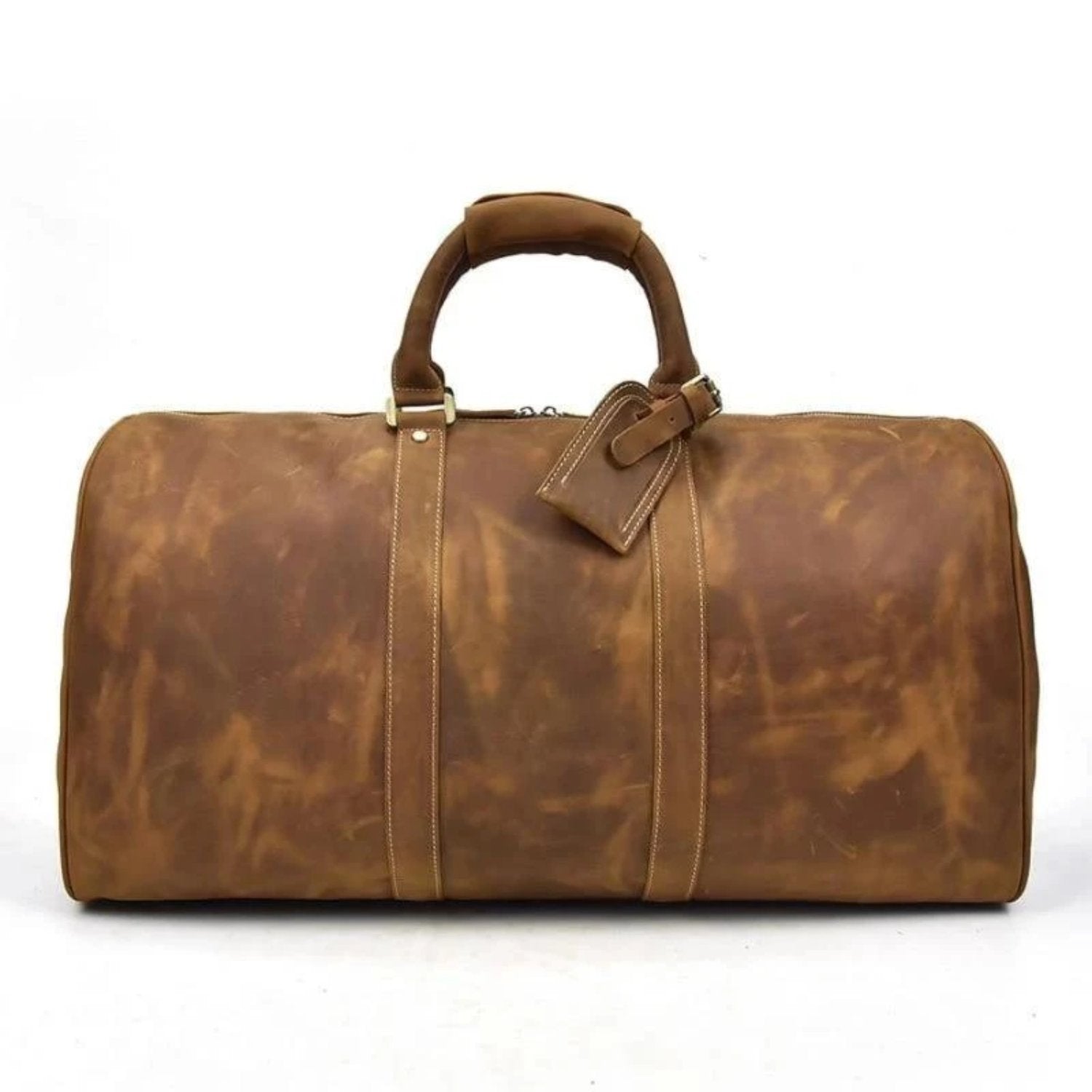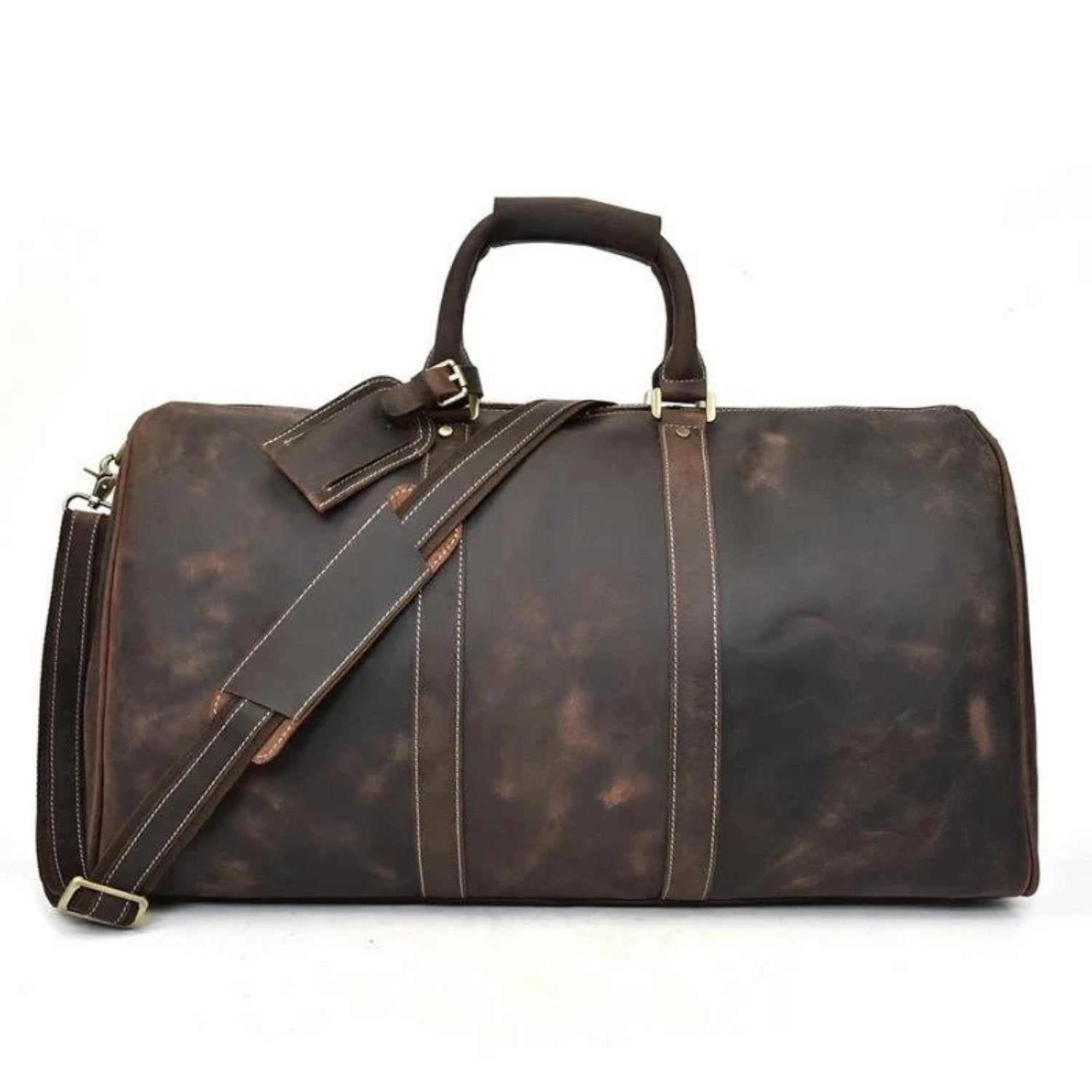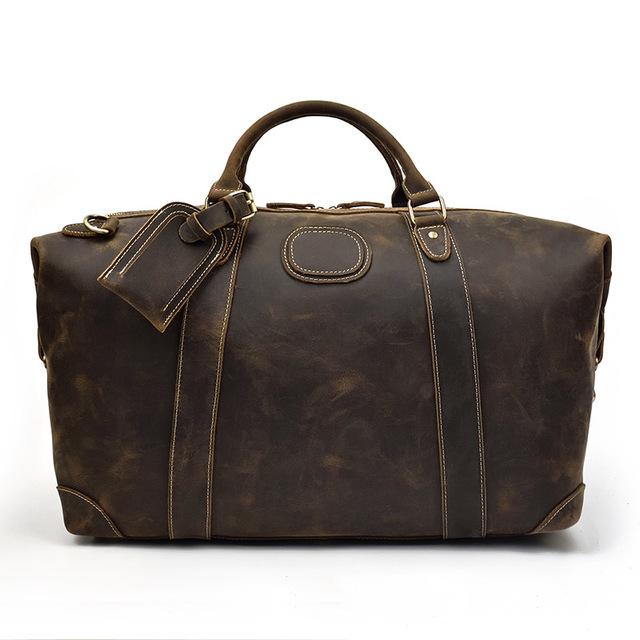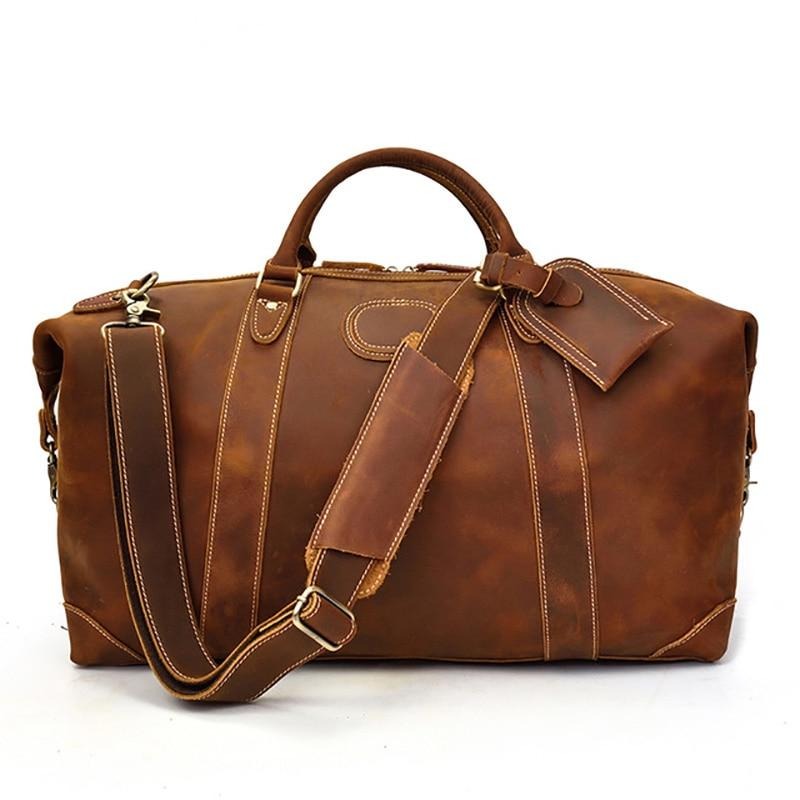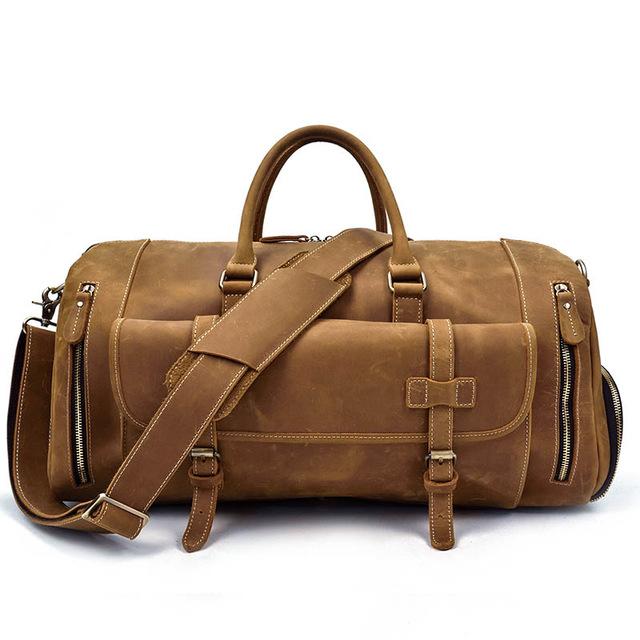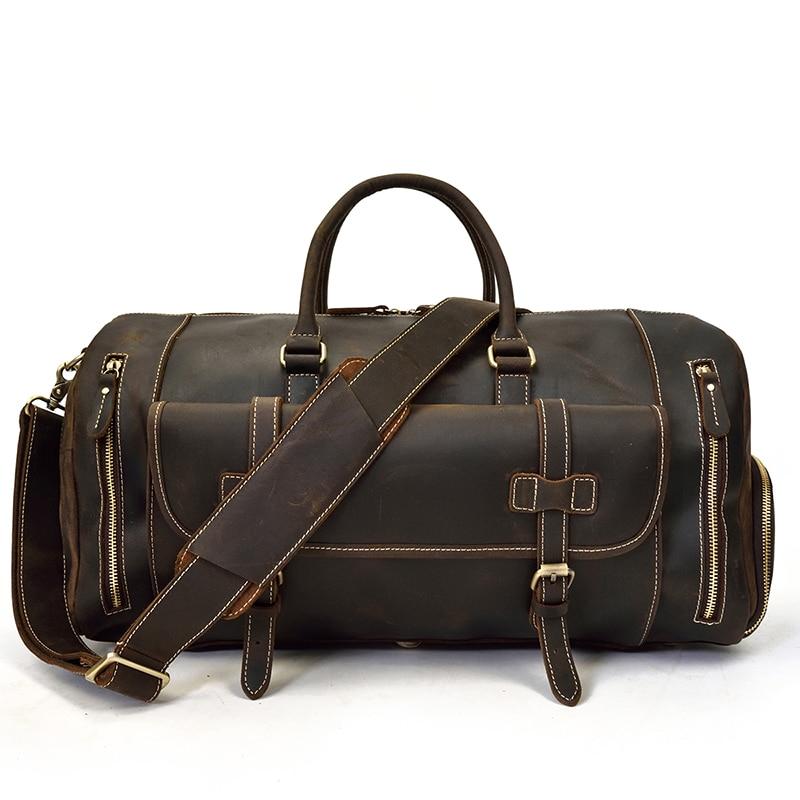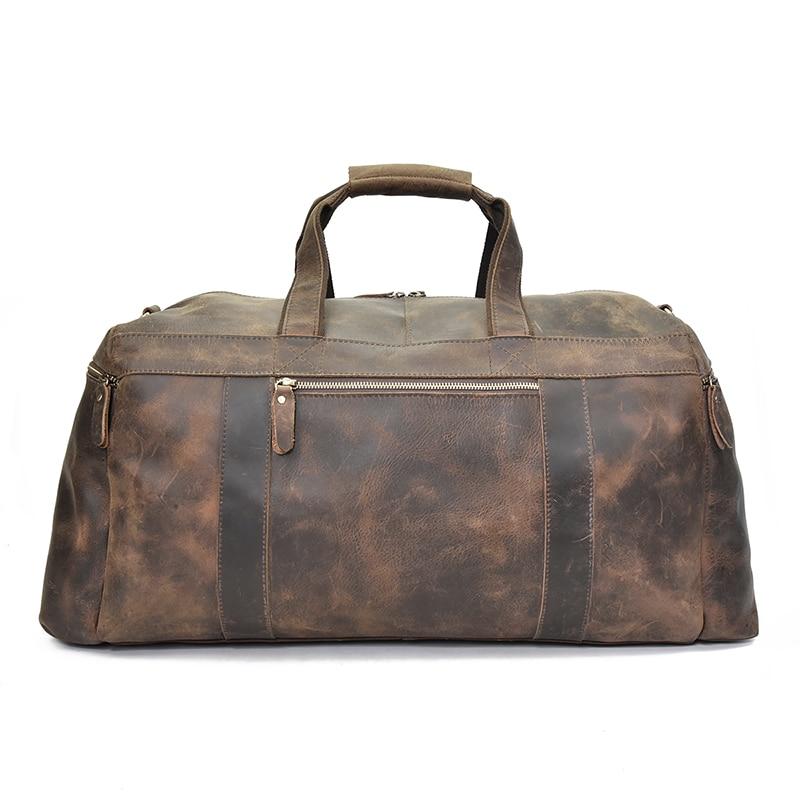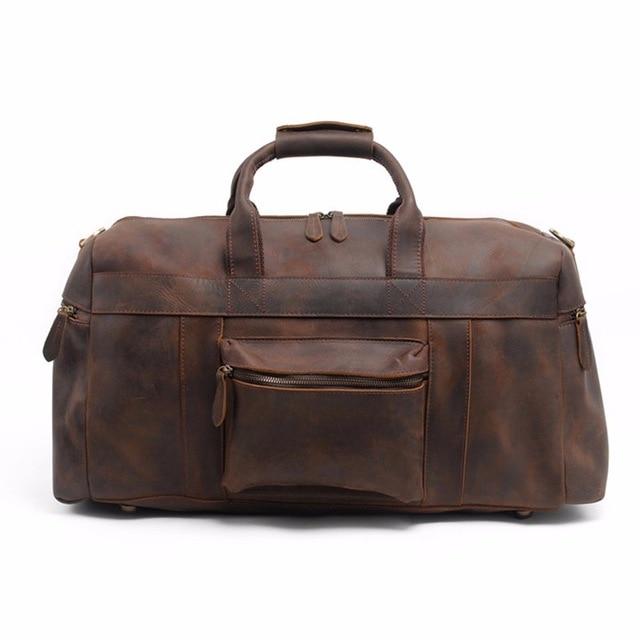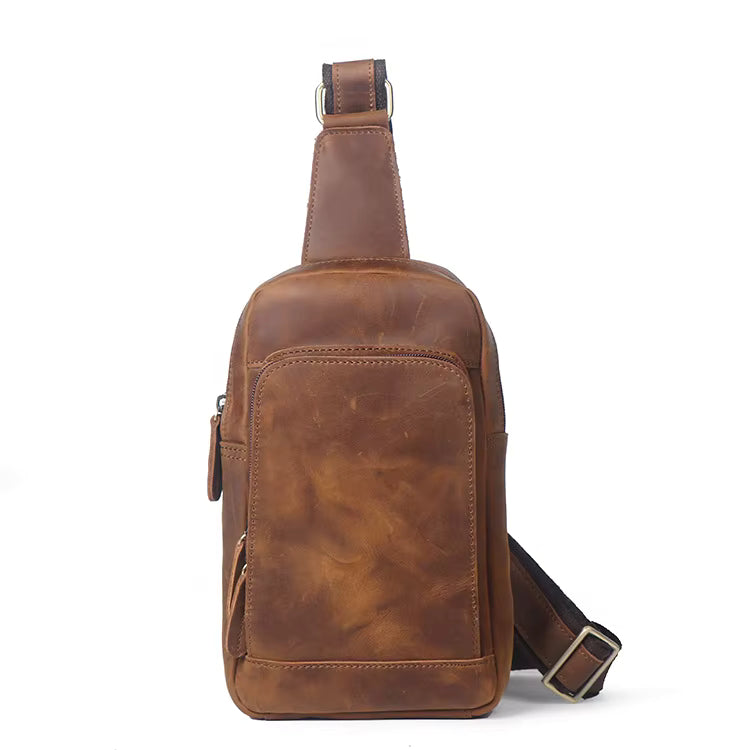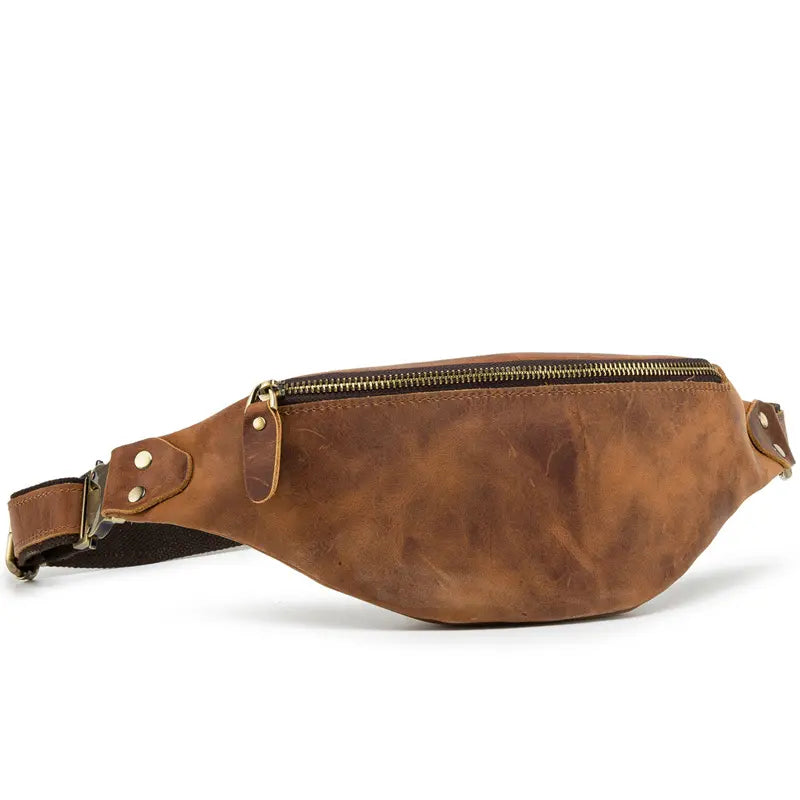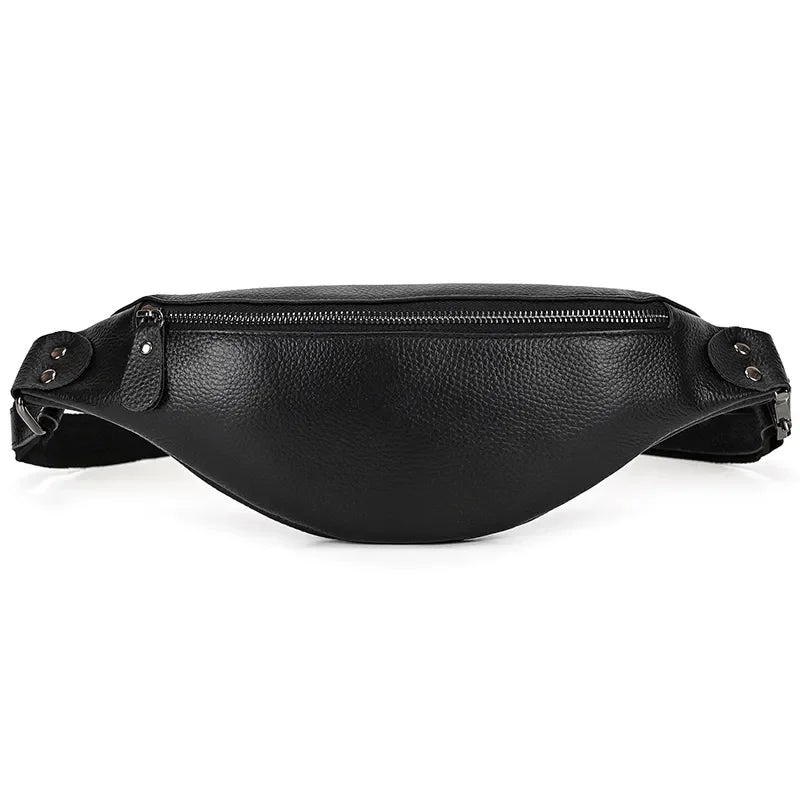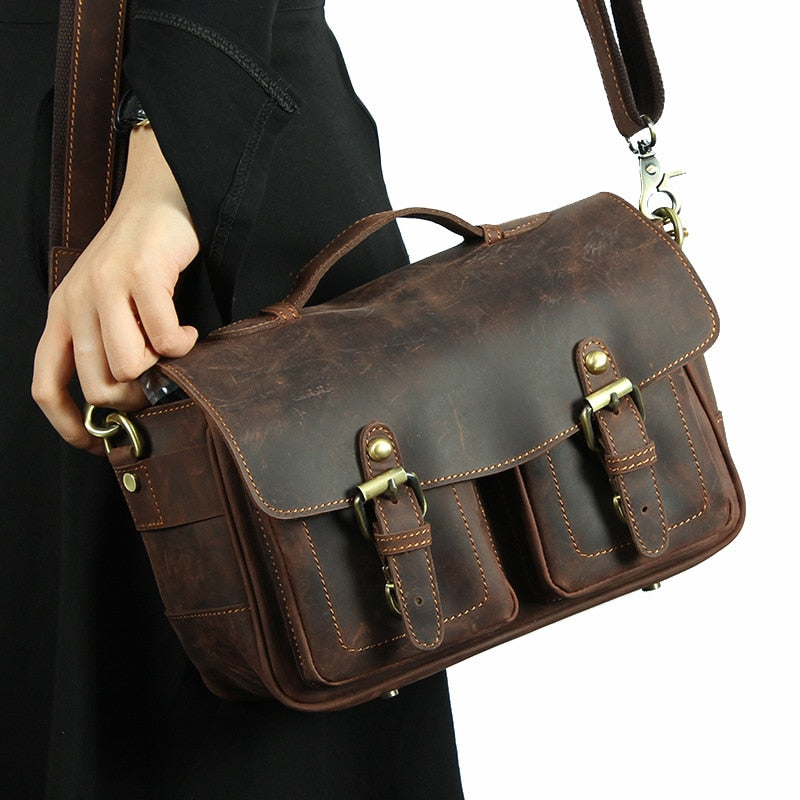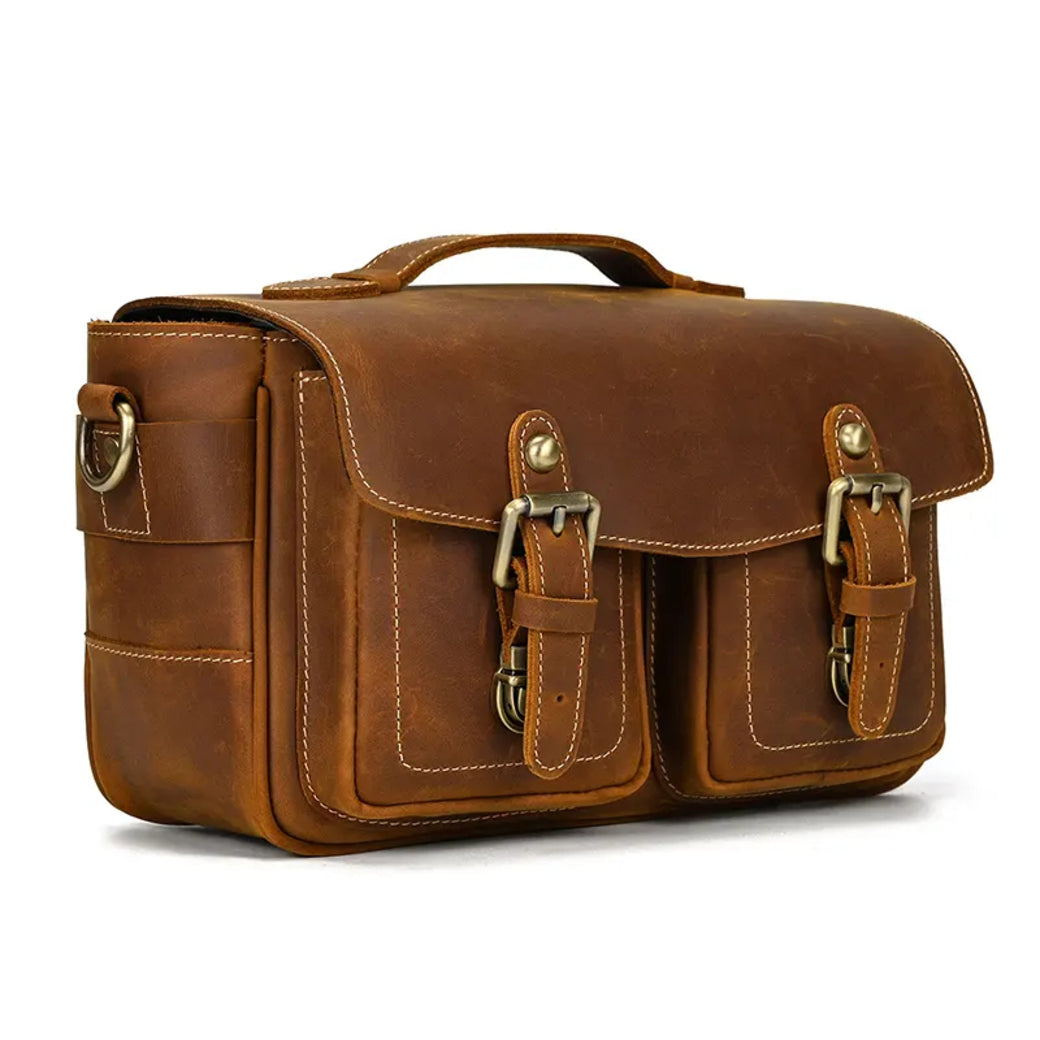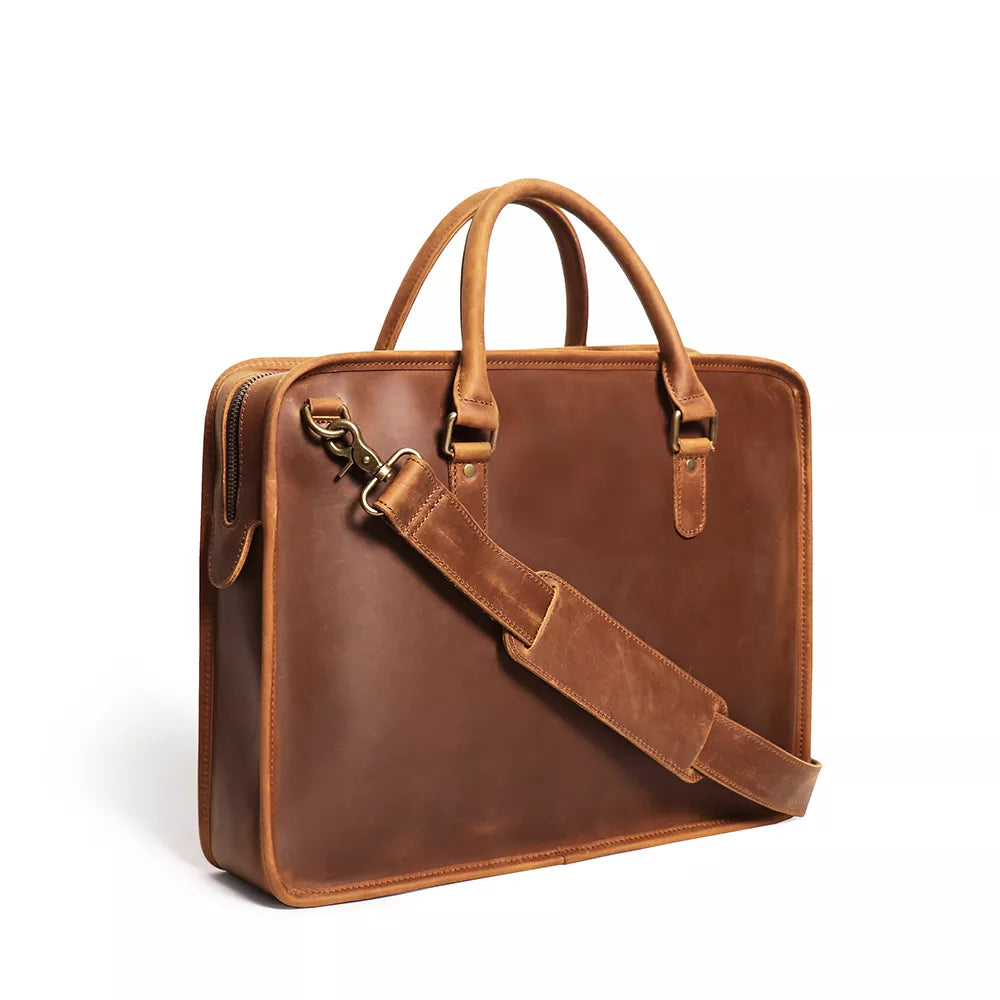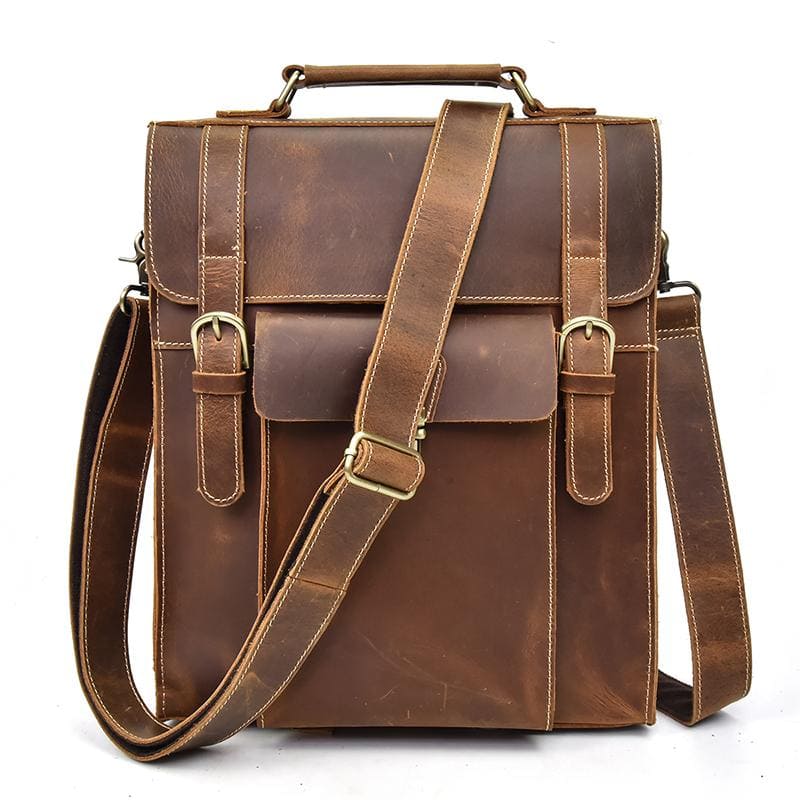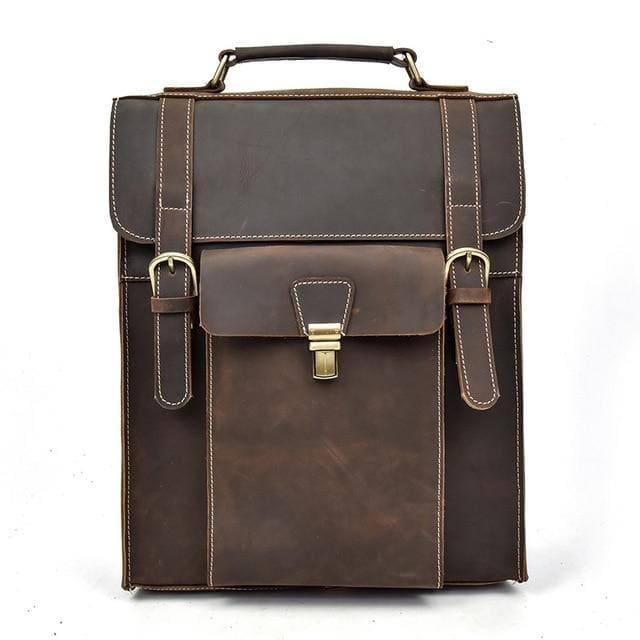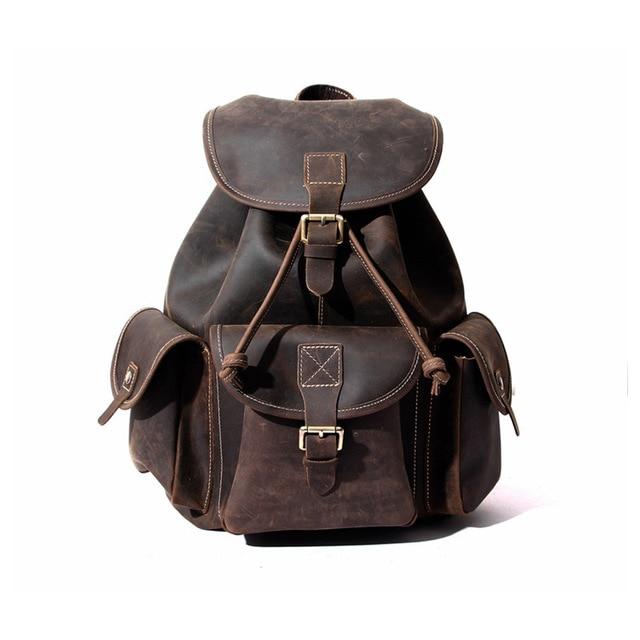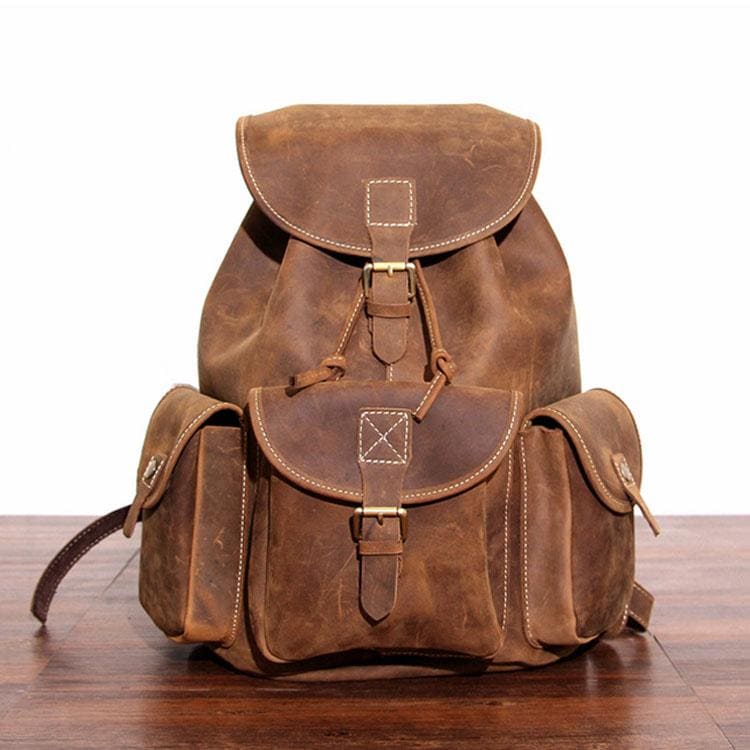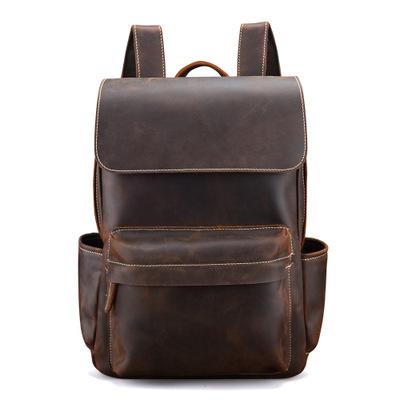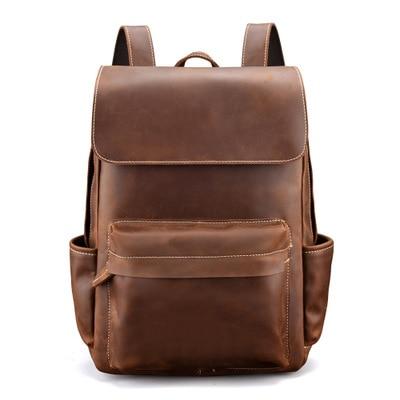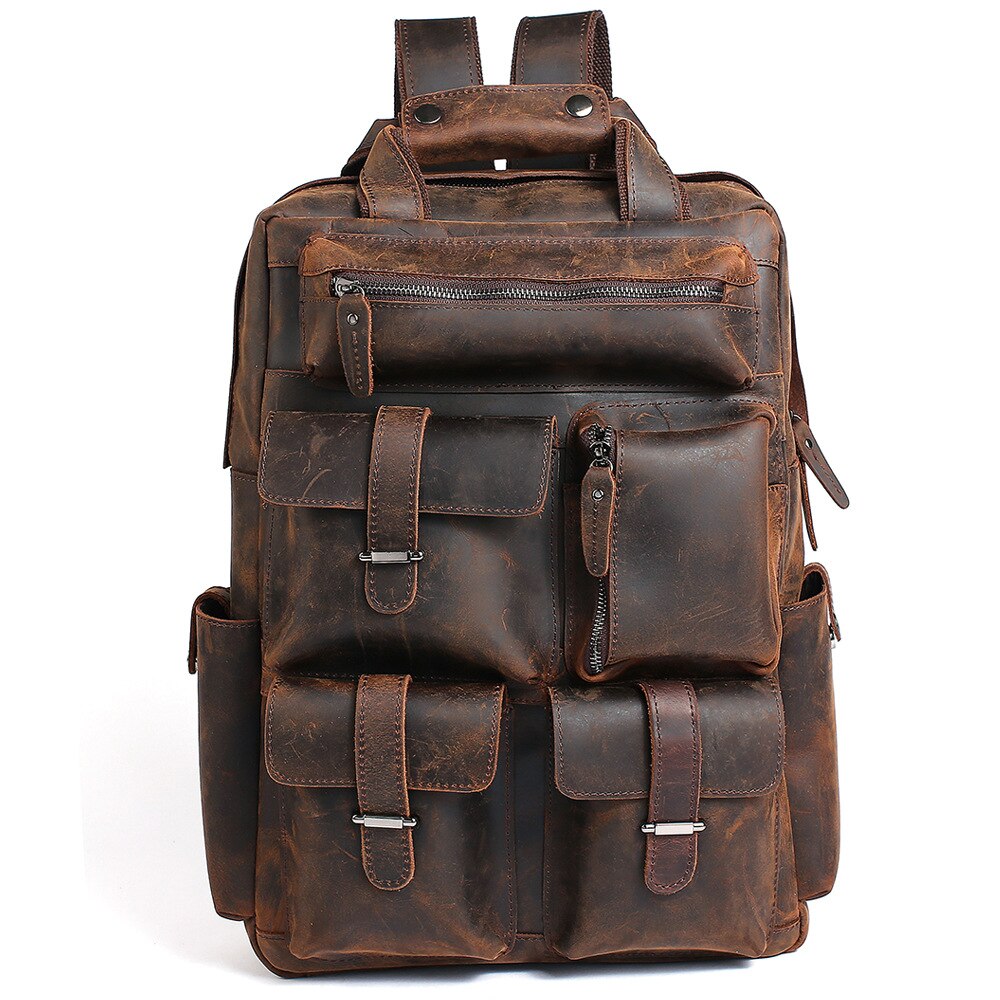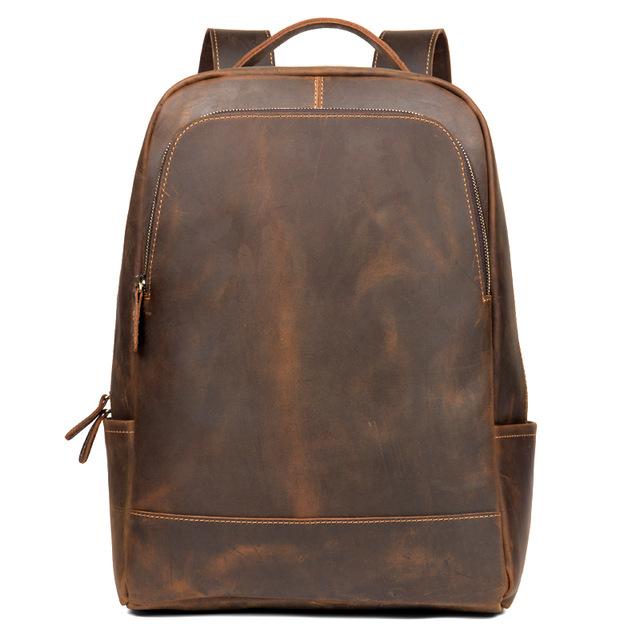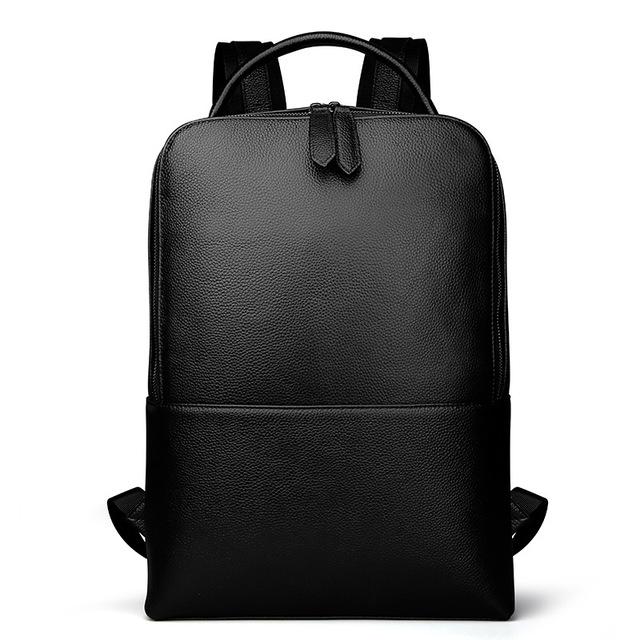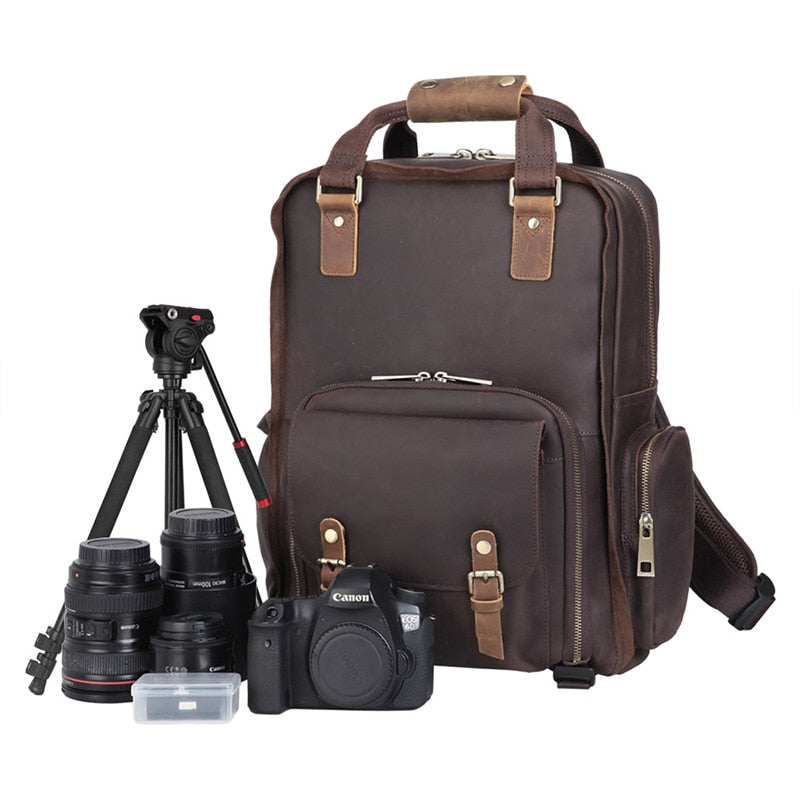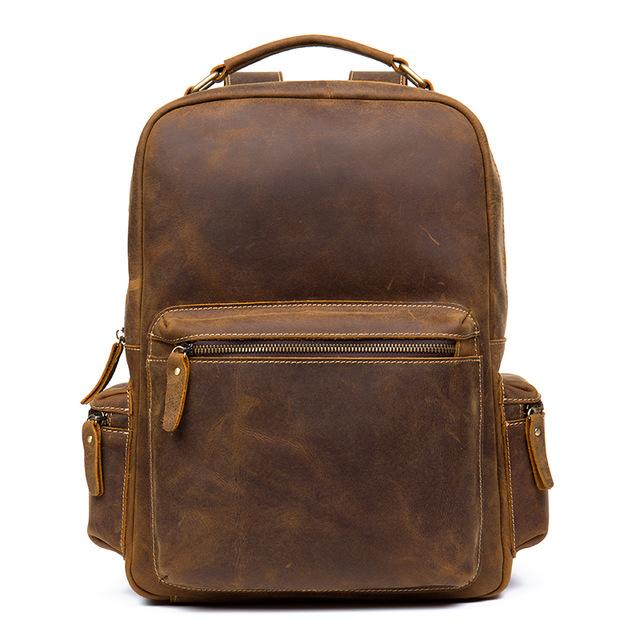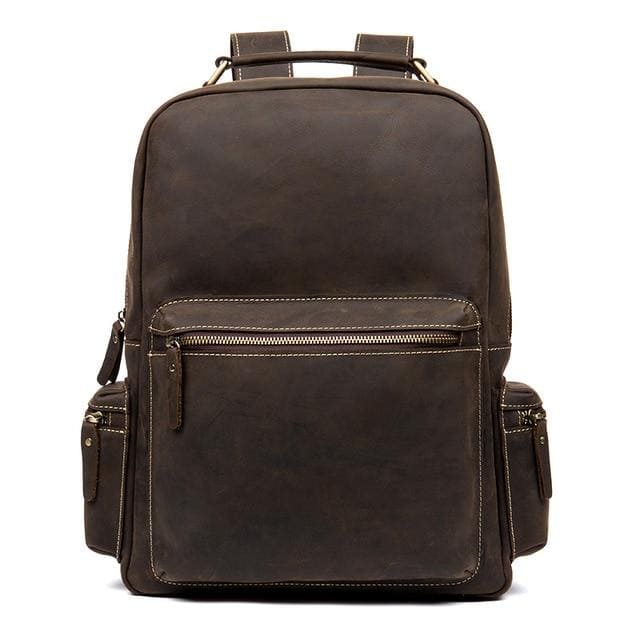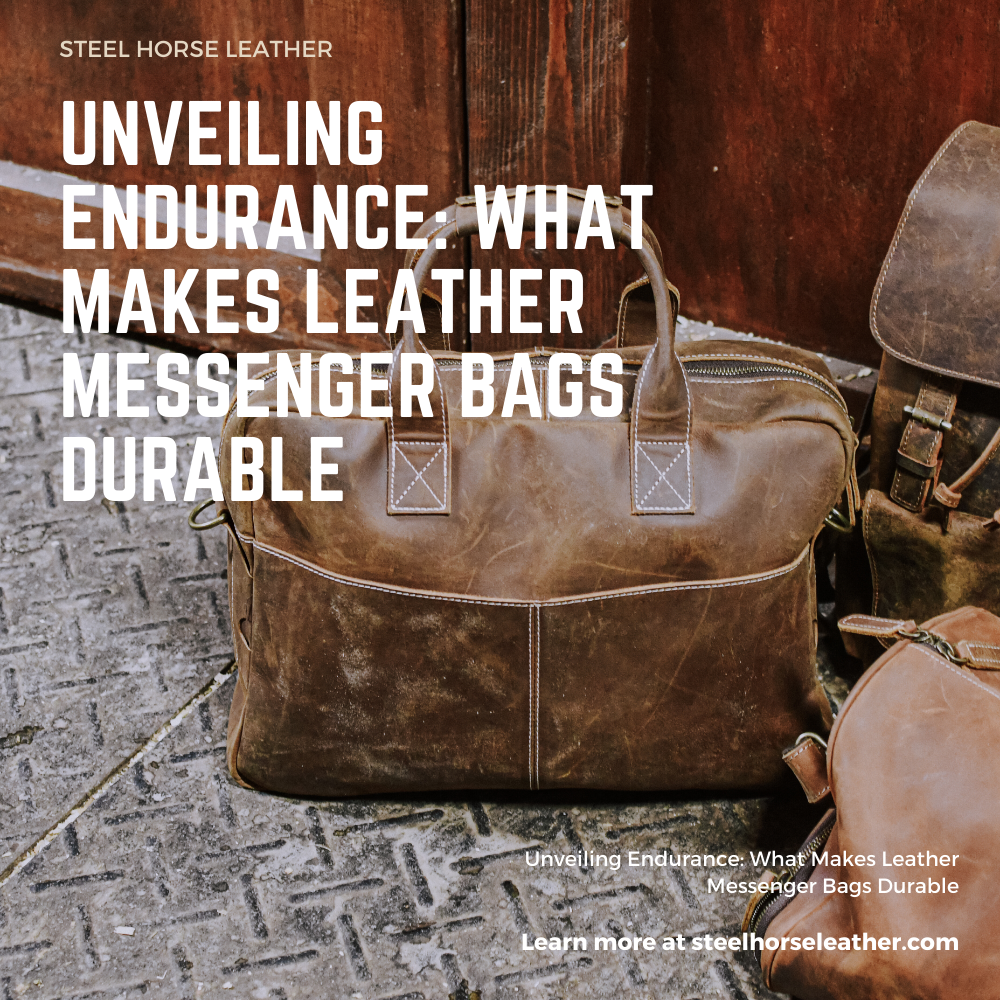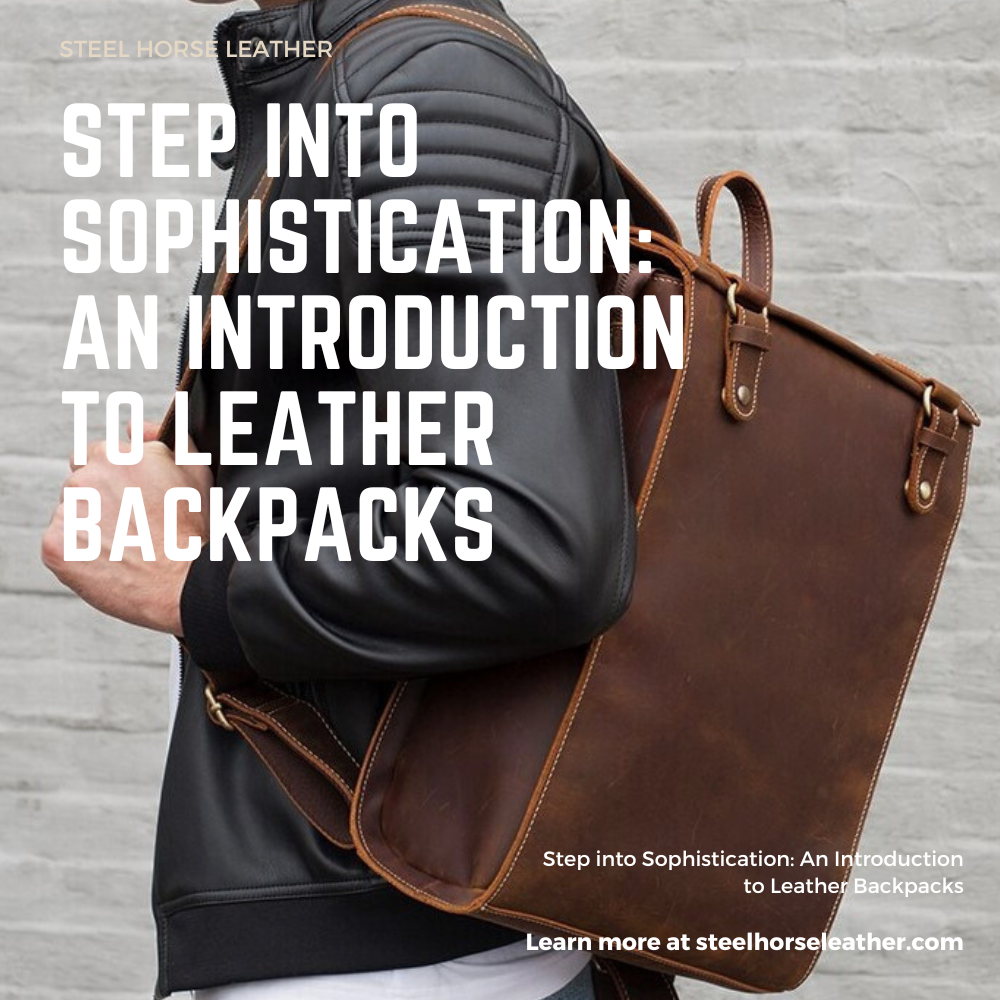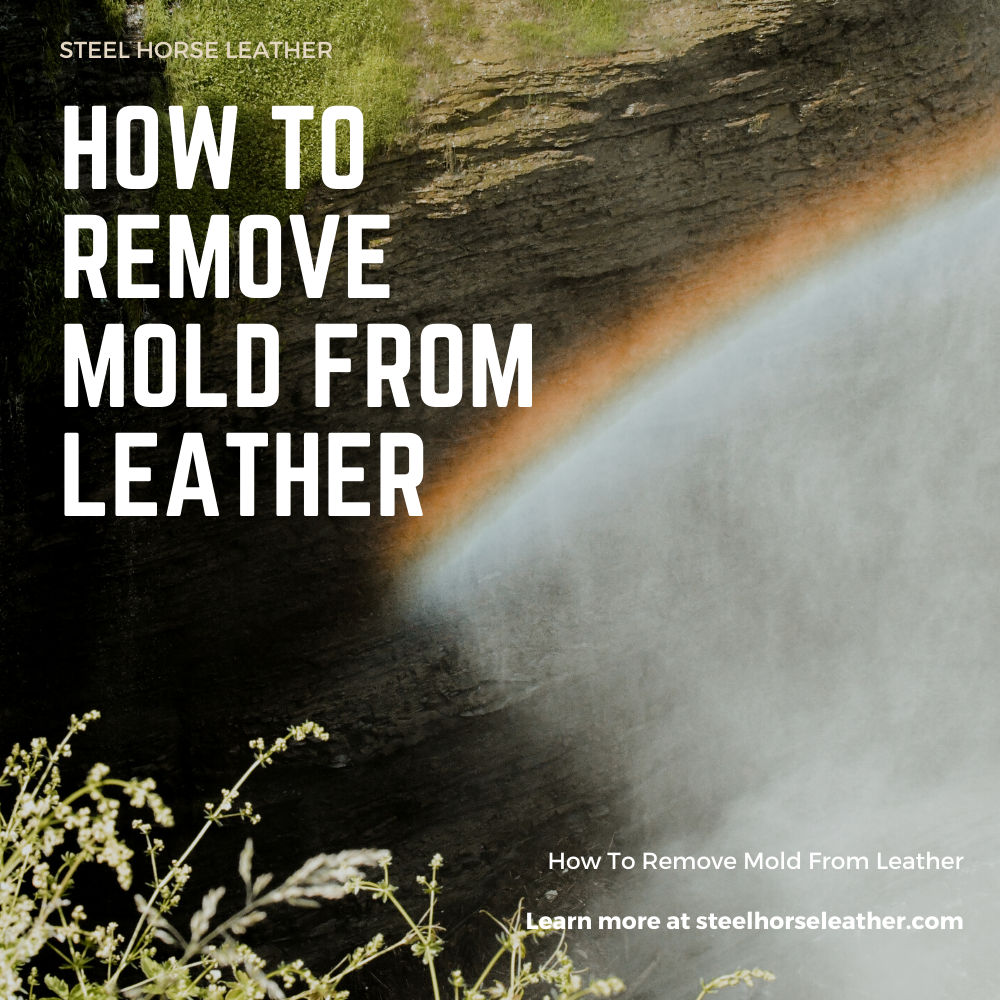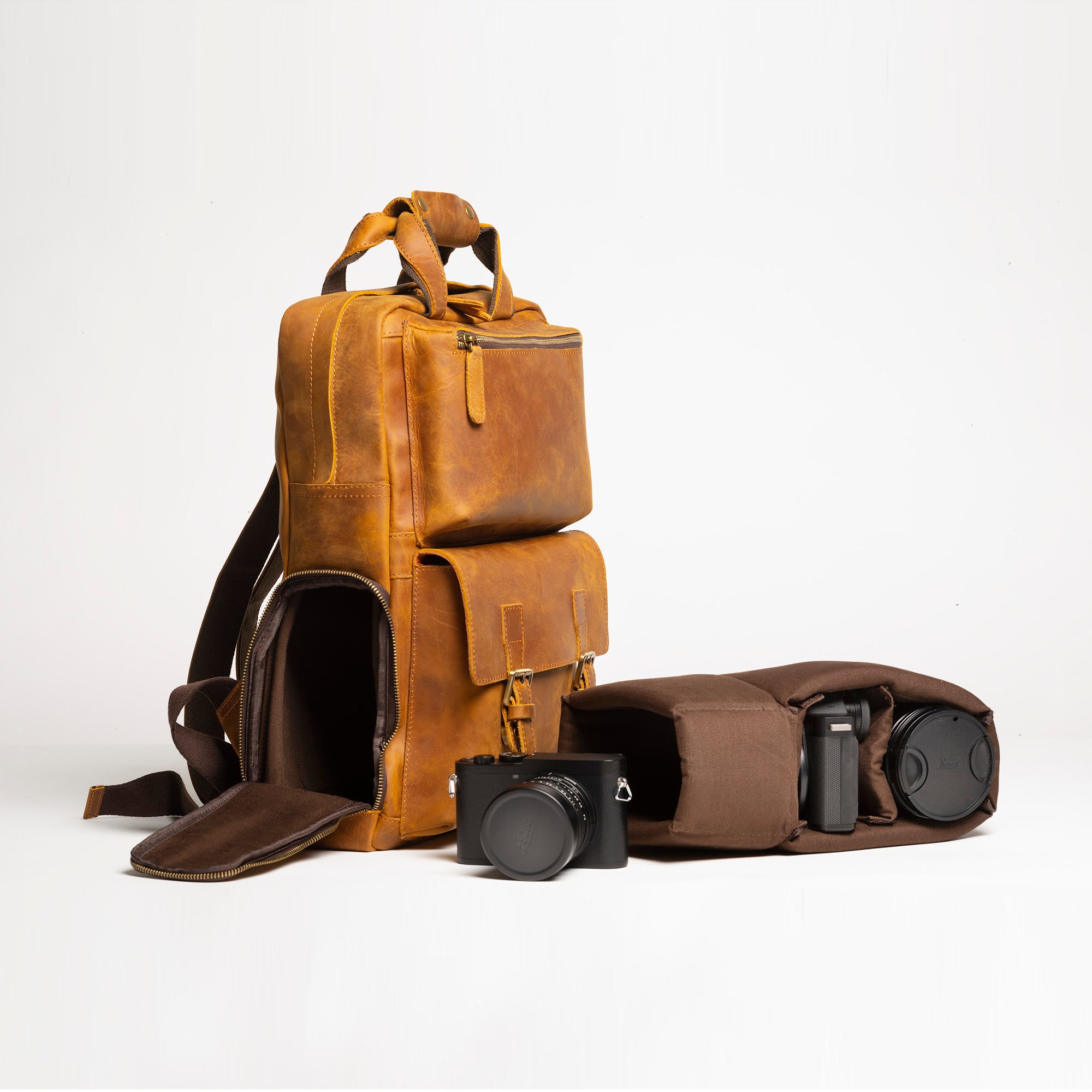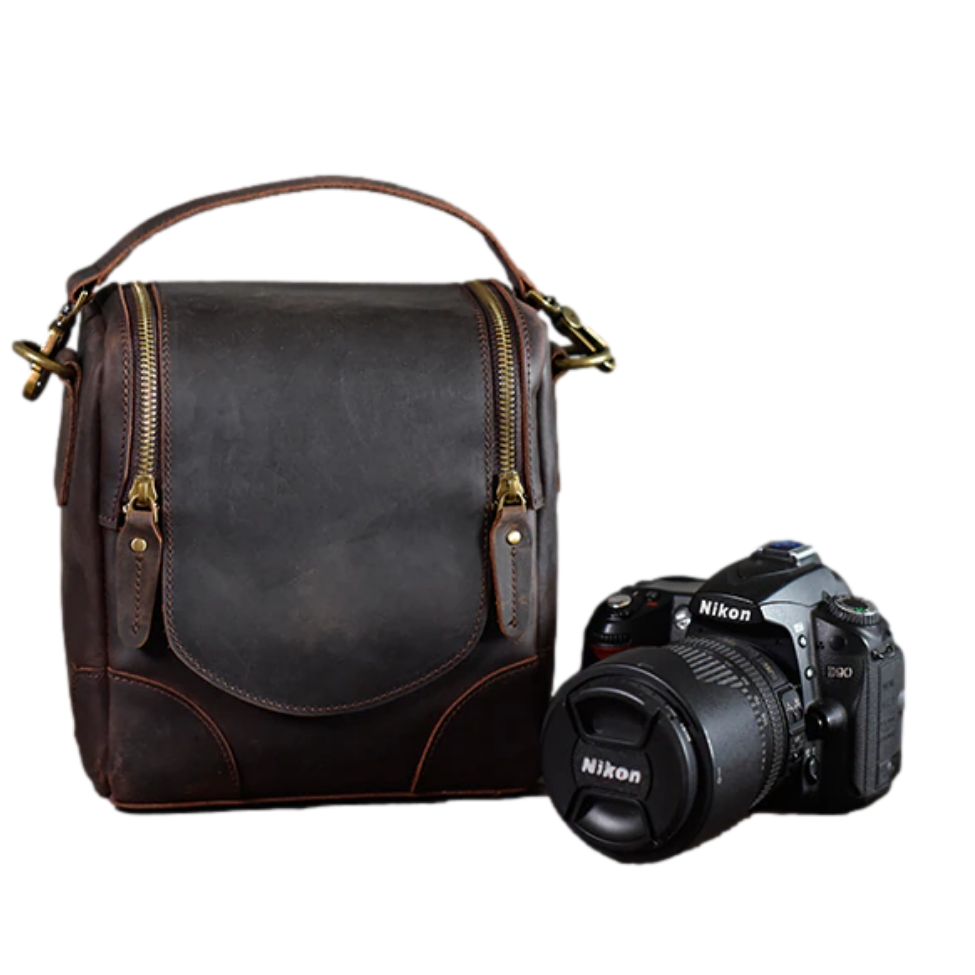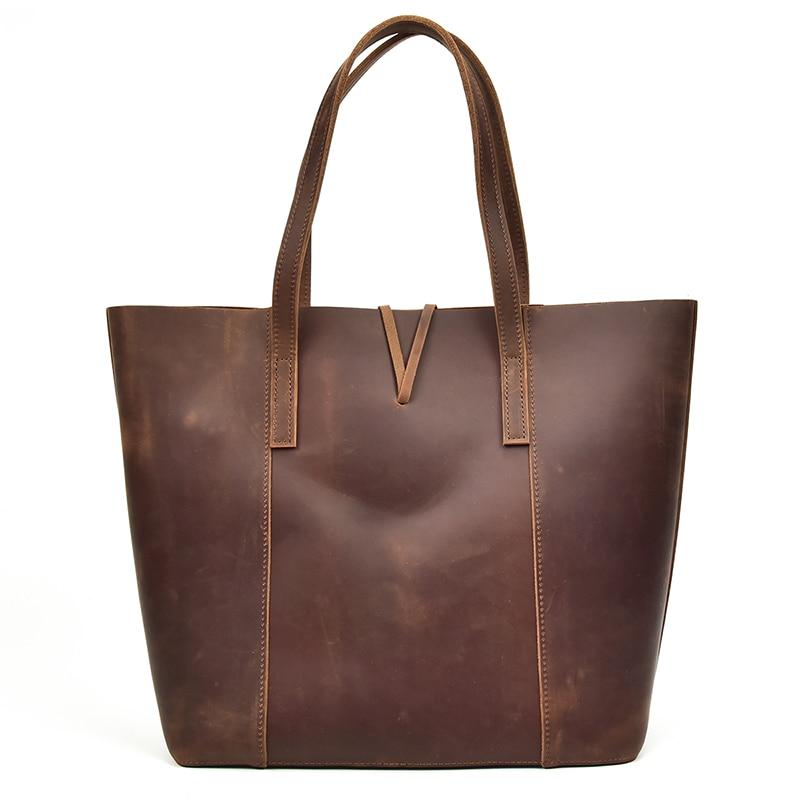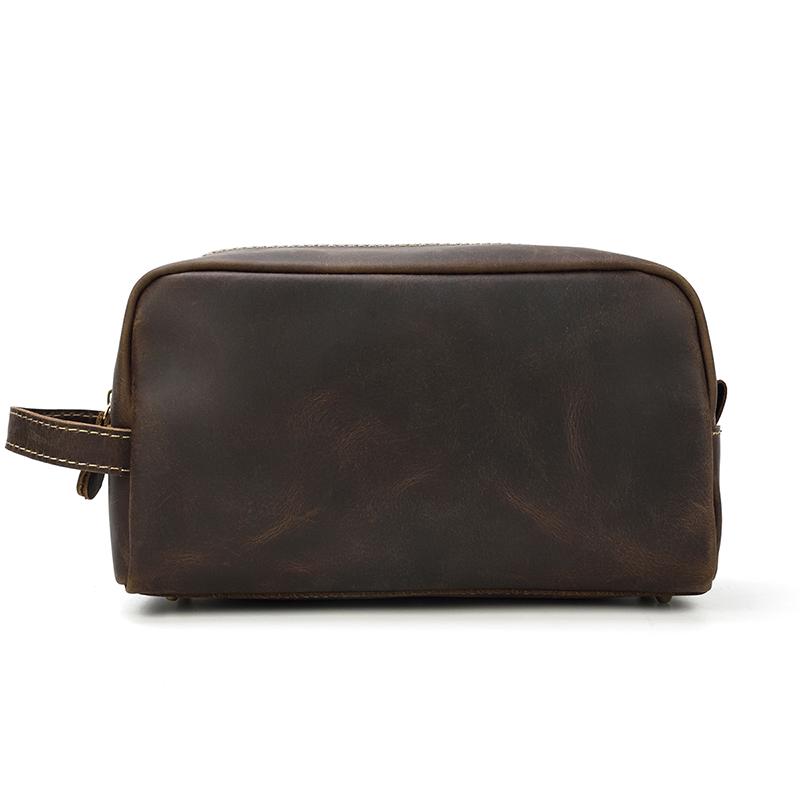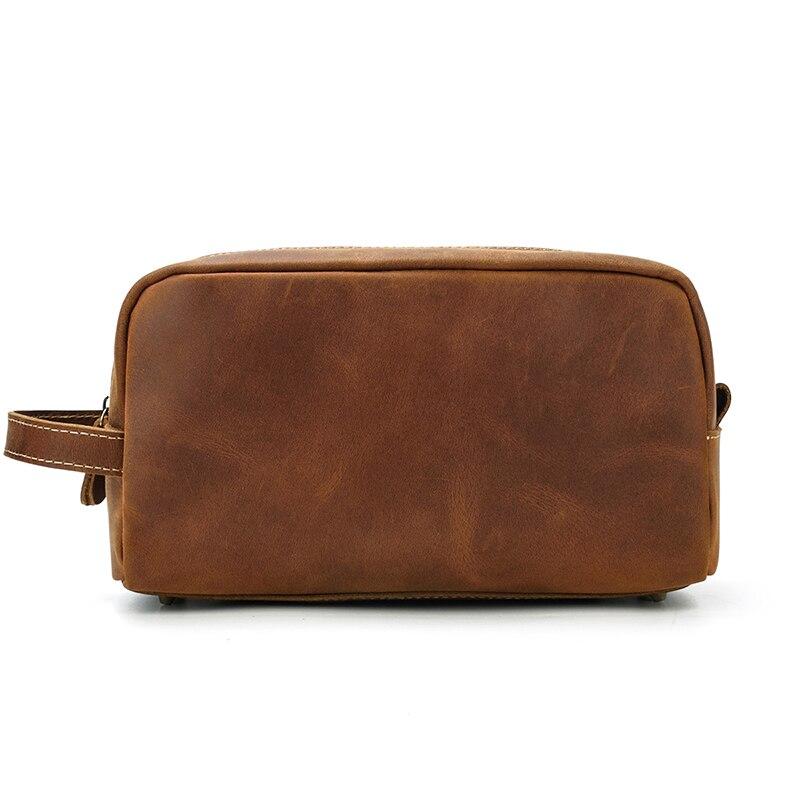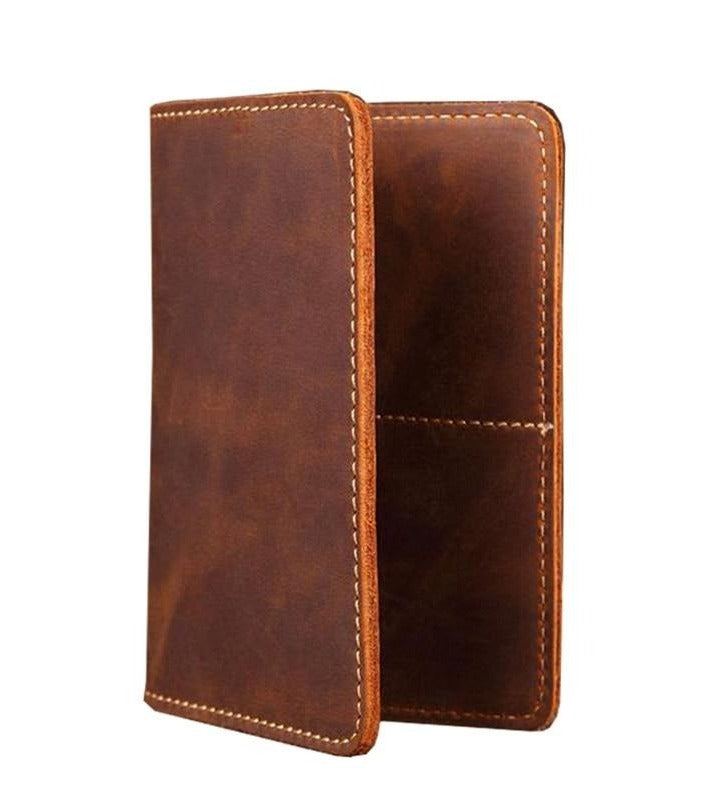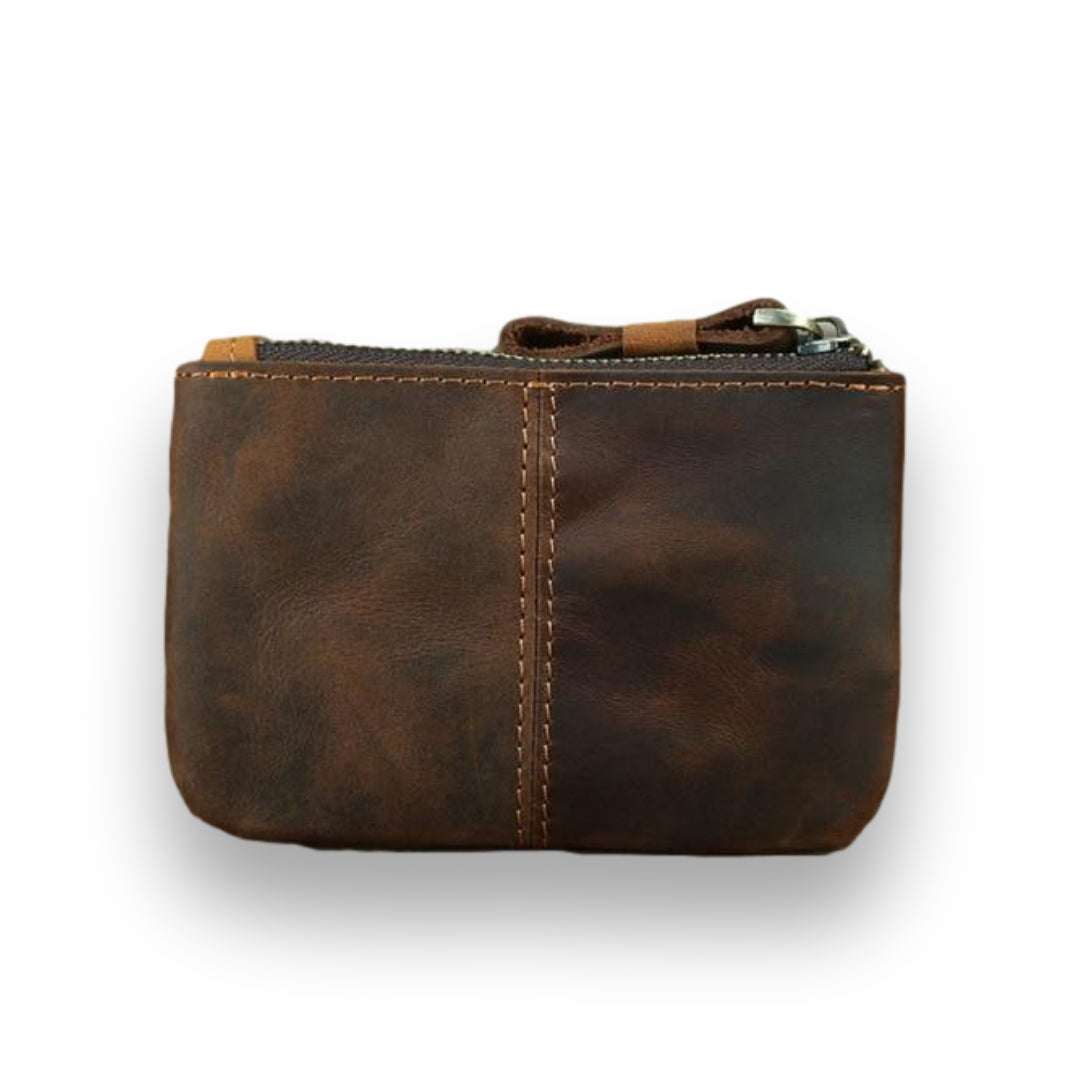Leather is excellent for many things. The use of this wondrous fabric includes upholstery for furniture, clothes, shoes, and of course bags. It is however expensive to own leather. Real leather such as full-grain leather and top-grain leather is expensive. They do however promise the best quality of leather anyone can buy. But for those on a budget, buying real leather is likely not an option. Owning leather however is still quite possible. This is where synthetic fabrics come in. Specifically, there are faux leather and PU leather.
Get to know more about faux leather and the pros and cons of owning faux leather items. If you wish to know more about PU leather click on this link to read our article all about it: What is PU Leather.
Key Takeaways
- Faux leather comes in two main varieties: PU (polyurethane) and PVC-based materials, each with distinct manufacturing processes and characteristics
- While more affordable, faux leather generally offers less durability and longevity compared to genuine leather products
- Synthetic leather provides a cruelty-free alternative, though its environmental impact due to plastic-based materials remains a concern
- Maintenance is generally easier with faux leather as it resists staining and requires less delicate care than genuine leather
- The choice between real and faux leather often depends on personal priorities regarding cost, durability, ethics, and environmental impact
Important Company Notice
An important reminder. Before we proceed on talking about what is faux leather we at Steel horse leather Co. do not use fake leather. Our company uses only real, natural leather for every product. We assure you that all products are authentic leather made from the highest quality of animal hide. Furthermore, at Steel horse leather Co. we are working with only the best Leather Artisans to bring your Genuine, High-Quality Leather products. Our products are therefore superior to any fake leather products in quality. If you wish to know more about us click on this link to be redirected to our About Us page.
History and Evolution of Faux Leather
The history and evolution of faux leather is a fascinating journey that traces back to the early 20th century when synthetic materials began to emerge as alternatives to traditional leather. Initially, the goal was to create a more affordable and cruelty-free option, leading to the development of the first synthetic leathers which were primarily produced using basic processes involving rubber and cotton. Over time, advancements in chemistry and manufacturing techniques transformed faux leather into a versatile and widely adopted material.
By the mid-1950s, the introduction of PVC (polyvinyl chloride) products revolutionized the faux leather market, making it more accessible to a broader audience. In the following decades, innovations in polyurethane (PU) technology allowed for the creation of faux leather that closely mimicked the look and feel of natural leather, propelling it into the fashion and upholstery industries. Today's faux leather not only serves as a stylish and practical alternative but also reflects a growing awareness of environmental impacts and ethical considerations regarding animal welfare, as brands continue to innovate towards creating more sustainable options.
Understanding Faux Leather
It looks like leather, it feels like leather but is it real leather? From its name, faux leather is not leather. Conclusively, "faux" is a French word that means "fake". Therefore, faux leather is fake leather. Many also refer to it as leatherette and/or vegan leather. Since it is fake it is, therefore, inferior to real leather products. It does, however, have its advantages. Get to know the advantages and disadvantages of faux leather as we go along.
Manufacturing Process
| Step / Aspect | Real Leather (Full-Grain) | Synthetic / Faux Leather (PU or PVC) |
|---|---|---|
| 🐄 Raw Material | Animal hide (cow, calf, goat, etc.) | Plastic polymers (polyurethane or polyvinyl chloride) on fabric backing |
| ⏱️ Production Time | 6–12 weeks (veg-tan) or 1–3 weeks (chrome) | Hours to 1–2 days |
| 🔪 Key Processes | Curing → liming → tanning → crusting → dyeing → oiling/finishing | Base fabric → apply liquid PU/PVC → emboss grain pattern → cool & peel |
| 🎨 Surface Pattern | Natural, irregular grain & pores Every hide is 100 % unique |
Perfectly repeated artificial grain Identical every meter |
| 👃 Smell | Rich, natural leather scent | Chemical or plastic smell (especially when new) |
| ✨ Aging / Patina | Develops beautiful, unique patina over years | Coating cracks, peels, or fades No patina |
| 🛡️ Durability | 20–100+ years if cared for | 3–10 years max before cracking |
| 💸 Cost | 3–10× more expensive | Very cheap to produce |
| 🌍 Eco Impact | By-product of meat industry Can be eco-tanned (veg-tan) |
Petroleum-based, non-biodegradable |
| 2025 Quick Test in Store | |
|---|---|
| Look at pores/grain | Irregular = real · Perfectly repeated = fake |
| Touch the back | Suede/fleshy = real · Fabric or plastic = fake |
| Smell it | Rich leather = real · Chemical = fake |
| Bend it | Natural creases = real · White stress lines = fake |
2025 Golden Truth (worldwide):
Real full-grain leather is alive — it breathes, ages, tells your story.
Synthetic is just plastic pretending for a few years.
Real Leather Production
Before we talk about what makes this type of synthetic leather let us briefly discuss how about what makes real leather.
Making natural leather is a time-consuming process. It also takes time and practice to perfect. To make real, natural leather we use animal skins or hide. The most common animals that are used to make leather are cows, horses, and rabbits. Although, cowhides are the most common leather fabrics. The leather making process involves a few steps. Steps such as cleaning the skin, removing the hairs, drying the skin, conditioning, tanning, and finishing. There are also a few methods of cleaning and tanning the leather. If you wish to know more about making real natural leather check out this article.
Synthetic Leather Production
Faux leather on the other hand is not made of real animal skin but of synthetic material.
It is purpose is obviously to look like real leather. Although it may look like leather and feel like leather it has a glaring difference from real leather. The two can be distinguished by looking at the patterns on the leather. Real leather has unique patterns since it is made from animal skin. It is said that no animal skin is exactly the same therefore unique and distinguishable in some way. Fake leather on the other hand has uniform patterns. This is because of the machine that makes the leather.
Types of Faux Leather
To be specific there are two types of faux leather. PU Leather Fabric and PVC Leather Fabric.
PU Faux Leather Fabric
This variation of fake leather fabric is made by applying or laminating 100% polyurethane finish to a base material. These base materials may be polyester, cotton, nylon, or rayon.
PVC Faux Leather Fabric
This variation of fake leather is similar to PU leather fabric. There is however a slight difference. Instead of using a polyurethane finish, this variation uses a combination of polyvinyl chloride with stabilizers (to protect), plasticizers (to soften), and lubricants (to make flexible), and then applying to a base material. It does still however use the same base materials as PU Leather. The distinct manufacturing processes of PU and PVC leather result in notable differences in texture and durability that significantly impact consumer choice. Research has shown that these compositional variations affect not only the feel and appearance of the final product but also its long-term performance characteristics (Choi et al., 2025; Chidara et al., 2025).
Environmental and Ethical Considerations
Vegan Leather Perspective
Many consider this as an advantage over real leather.
Faux leather is consideredvegan leather since it does not use any real animals in the process. Many therefore use fake leather as a cruelty-free alternative to owning accessories such as handbags and furniture. It is however important to consider the environmental concern that fake leather brings. The reliance on petroleum-based plastics in faux leather production presents significant environmental challenges. While synthetic leather offers a cruelty-free alternative to animal products, studies indicate that materials like PVC and PU may contribute to plastic pollution, highlighting the need for continued innovation in sustainable production methods (Chidara et al., 2025; Wei & Zimmermann, 2017). Since the making of fake leather involves a plastic base such as PVC, many raise its ecological impacts. There are however many brands that produce fake leather that is innovating to keep the ecological impacts low.
Cost Comparison

Price Differences
A blatant difference when it comes between real leather and faux leather is the cost. Real leather is expensive. The higher the quality of leather the more it costs. Faux leather on the other hand costs less. That is why many purchase fake leather because of its price. You pay less for something that looks and feels the same as real leather.
Manufacturing Cost Factors
The reason for the difference in prices is because of manufacturing. Real leather is hard to manufacture and takes time to create. Animal skin also costs more to acquire. Faux leather is cheaper because it is easier to manufacture with machines. It also takes less time to make and produces more leather in a shorter span of time than real leather.
Indeed, it is quantity over quality.
Quality and Maintenance

Durability Comparison
Speaking of quantity over quality, let us talk about the difference when it comes to durability.
If leather is known for something, it is because of its durability. Real leather if properly taken care of will last a lifetime. It will also develop a beautiful patina which adds to its value. This durability is precisely why we at Steel horse leather Co. chose full-grain leather for our Dagny Weekender travel bag. During its development, our artisans specifically tested various leather grades to ensure maximum longevity. The result is a weekender that not only withstands frequent travel but actually improves in character over time, developing a unique patina that tells the story of your journeys.
Faux leather, on the other hand, is not so durable. Studies confirm that synthetic materials are prone to cracking and puncturing more easily than genuine leather, particularly under regular wear and tear conditions, which underscores the importance of considering longevity when making investment decisions in leather goods (Kellen et al., 2025). It is known to easily crack and puncture, especially with infrequent use. This becomes particularly problematic for travel bags, where reliability is crucial. During our product testing phase, we observed how synthetic materials often failed to maintain their integrity under the stress of regular use, reinforcing our commitment to genuine leather.
Cleaning and Care
Since real leather is an organic material it easily absorbs liquids. Therefore, real leather easily stains. Furthermore, these stains are a pain to remove, if removing it is still possible. Faux leather on the other hand does not absorb liquids. It therefore will be less susceptible to staining. It is also easier to clean in contrast to real leather. Cleaning real leather is a delicate process.
Why Trust Our Leather Expertise?
At Steel horse leather Co., our deep understanding of leather comes from years of dedicated craftsmanship and meticulous attention to quality. Our master artisans have spent decades perfecting their craft, treating leather working not just as a trade, but as an art form. This expertise allows us to speak authoritatively about the differences between genuine and faux leather, as we work with premium leather materials daily and understand their characteristics intimately.
Our commitment to leather excellence extends beyond mere craftsmanship. We've invested considerable time and resources into understanding the complete leather supply chain, from sourcing to final product. Through our extensive relationships with premium leather suppliers and our thorough vetting process of tanneries, we've gained comprehensive knowledge of leather processing, quality assessment, and authentication. This firsthand experience enables us to provide accurate, practical insights into the distinctions between genuine and synthetic leather options.
When we discuss leather quality and characteristics, we speak from a position of hands-on experience and proven expertise. Our artisans work exclusively with high-grade genuine leather, allowing us to understand not just the theoretical differences between real and faux leather, but the practical implications of choosing one over the other. This knowledge comes from creating countless leather products and observing how different types of leather perform over time, making us uniquely qualified to guide you through the complexities of leather selection.
Frequently Asked Questions
How Can I Distinguish Between Real and Faux Leather?
The most reliable way to identify different types of leather is to examine the texture pattern on the surface. Real leather and full-grain leather feature unique, irregular variations in grain due to natural animal hide variations, while faux leather materials and synthetic leather products display uniform, repeating patterns due to the manufacturing process. Genuine leather products showcase distinct texture, whereas artificial leather and imitation leather typically have a machine-made piece appearance. The surface finish of synthetic materials often includes an artificial grain pattern created during the production process.
Is Faux Leather Completely Environmentally Friendly?
While faux leather is animal-free, it's not entirely environmentally friendly due to its plastic-based components. However, some brands are developing more eco-conscious alternatives to traditional synthetic leather.
What's the Expected Lifespan of Faux Leather Products?
Faux leather products and synthetic leather typically have a shorter lifespan than genuine leather jackets and real leather items, particularly with daily wear. Artificial materials are more prone to cracking and puncturing, especially without proper care. The durability often depends on the quality leather used in real leather production versus the base materials and fabric base used in faux leather production.
Are There Any Advantages to Choosing Faux Leather Over Real Leather?
Yes, faux leather offers several benefits as an affordable alternative to leather. These include lower cost per square foot, easier maintenance, water resistant properties, and being a viable alternative for those concerned about harm to animals. Faux leather materials come in a wide range of color options and are a popular choice for furniture upholstery, auto upholstery, and clothing applications.
How Should I Care for My Faux Leather Items?
Faux leather requires less intensive care than real leather. Regular cleaning with mild soap and water is usually sufficient, and you don't need to worry about special conditioning treatments.
Conclusion
Overall, faux leather is indeed an inferior leather when compared to real leather. However, it does come with its own advantages against real leather. Choosing the right leather will always be a matter of preference. Many factors will always involve your choices. Cost over quality may be the most common. However, it is always important to note that real leather, although quite expensive, will always be a good investment in the long run.
References
Chidara, A., Cheng, K., & Gallear, D. (2025). Ontology-based modelling and analysis of sustainable polymer systems: PVC comparative polymer and implementation perspectives. Polymers, 17(19), 2612. https://doi.org/10.3390/polym17192612
Choi, S., Lee, D., Zo, S., Sood, A., & Han, S. (2025). Gel-based approaches to vegan leather: Opportunities and challenges in mimicking leather properties. Gels, 11(6), 395. https://doi.org/10.3390/gels11060395
Kellen, C., Zhafirah, L., & Kasih, T. (2025). Transforming fast fashion: Exploring bio-leather as a sustainable alternative. IOP Conference Series: Earth and Environmental Science, 1488(1), 012039. https://doi.org/10.1088/1755-1315/1488/1/012039
Wei, R., & Zimmermann, W. (2017). Microbial enzymes for the recycling of recalcitrant petroleum‐based plastics: How far are we? Microbial Biotechnology, 10(6), 1308-1322. https://doi.org/10.1111/1751-7915.12710

























